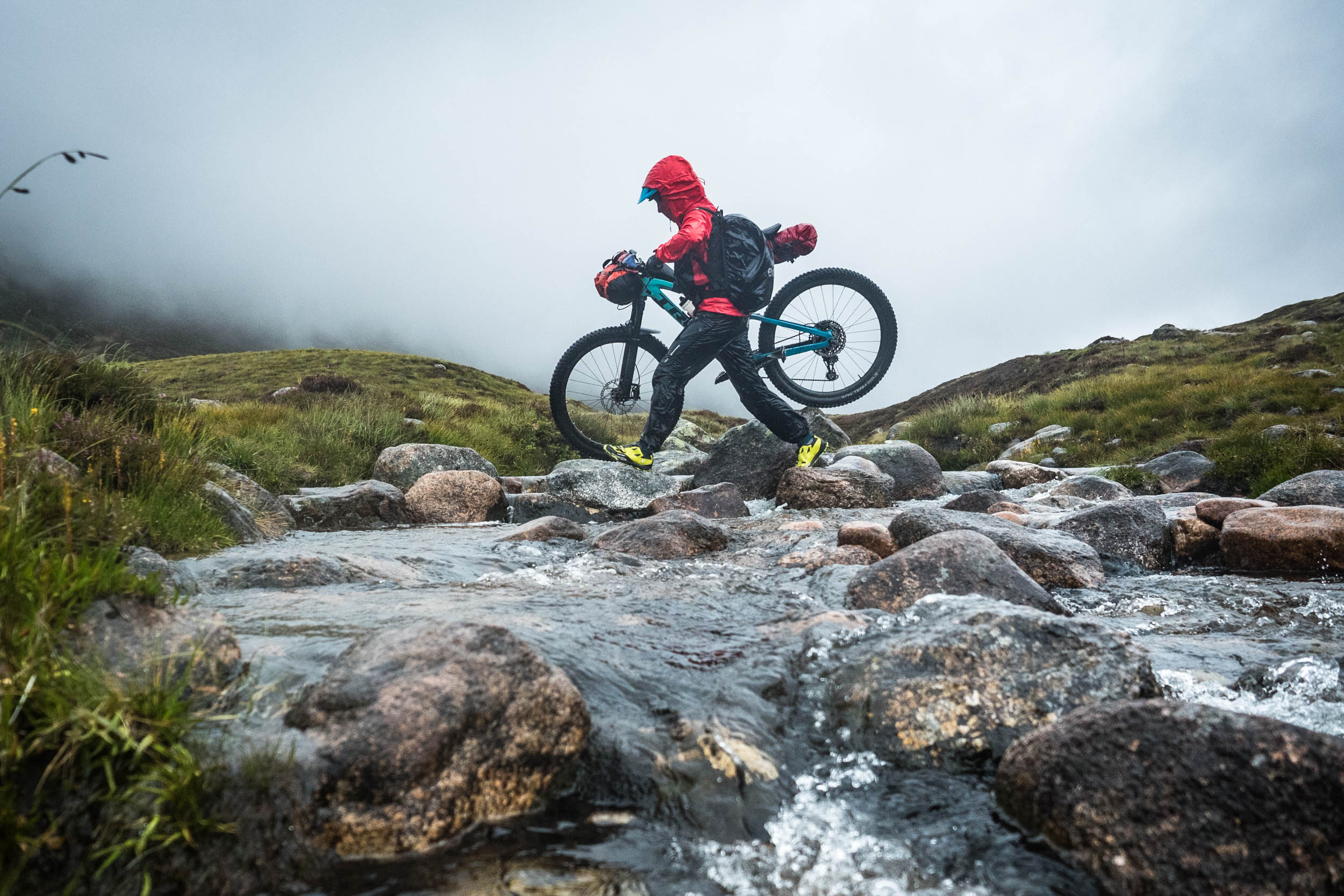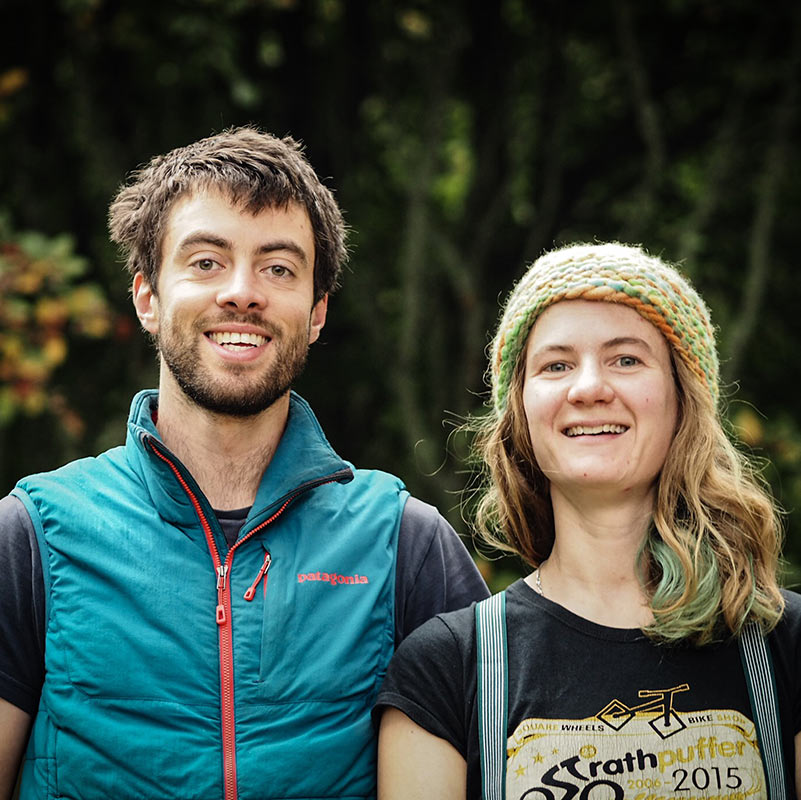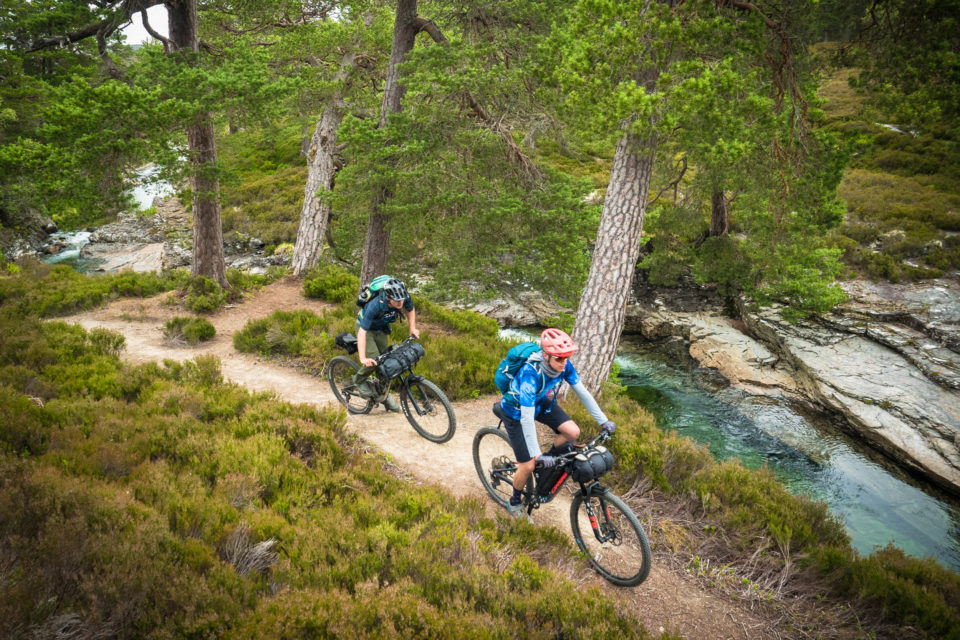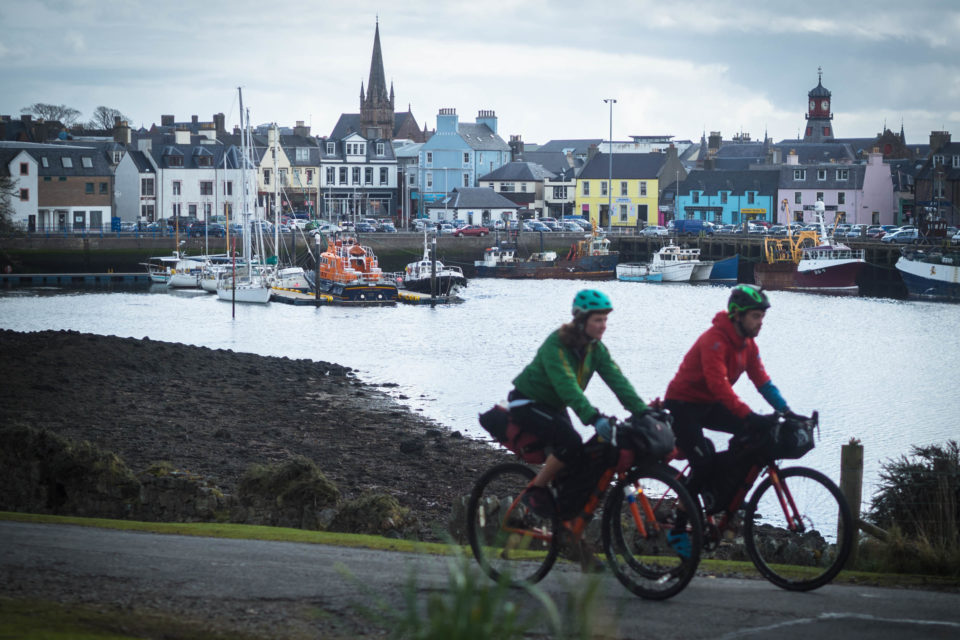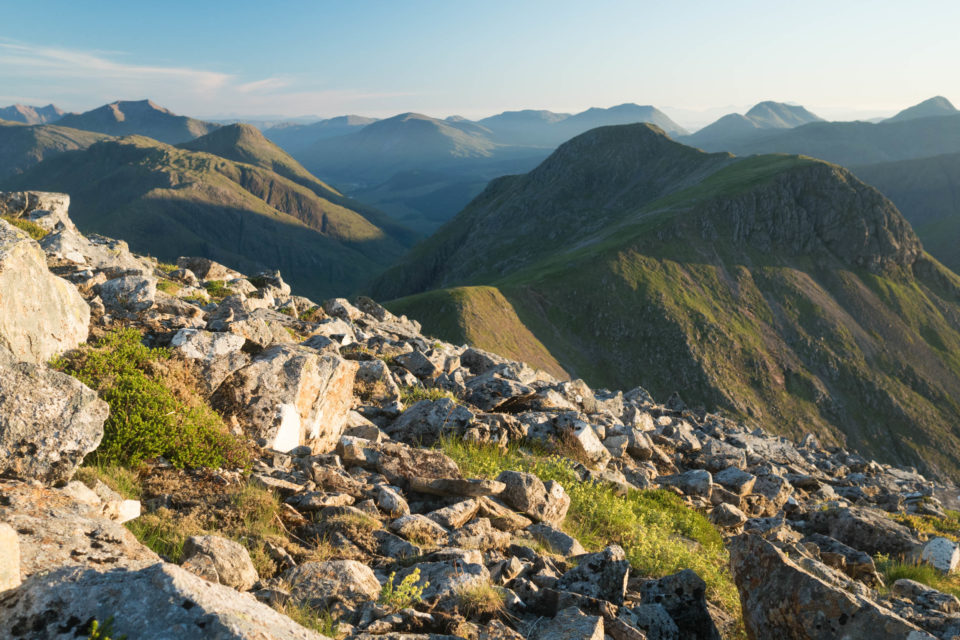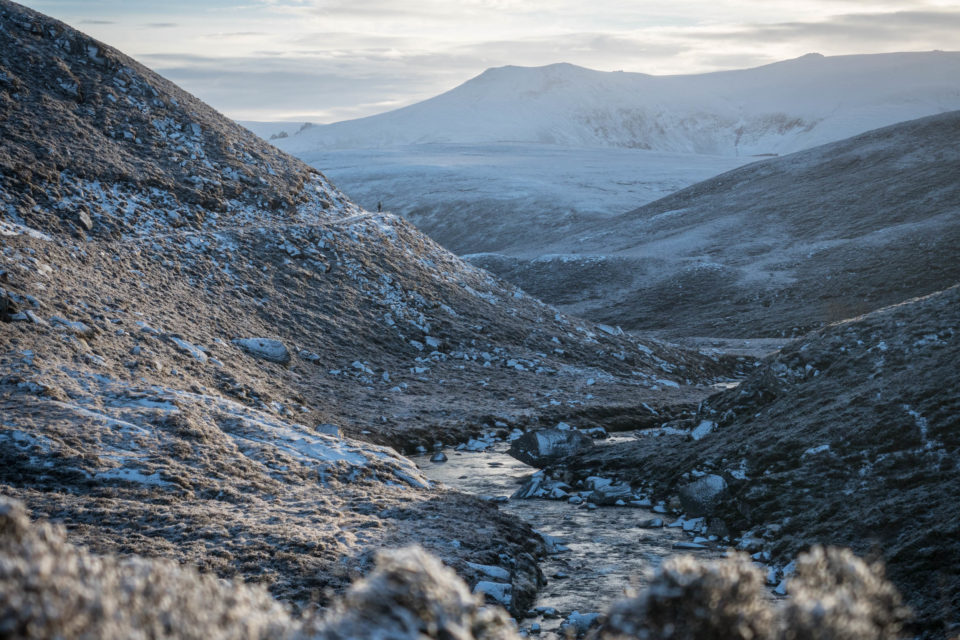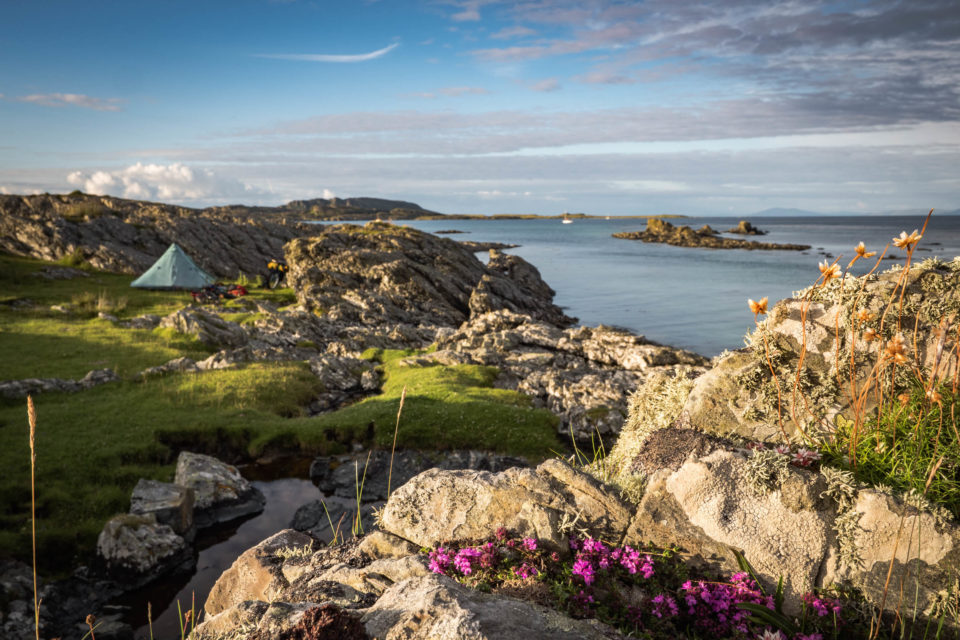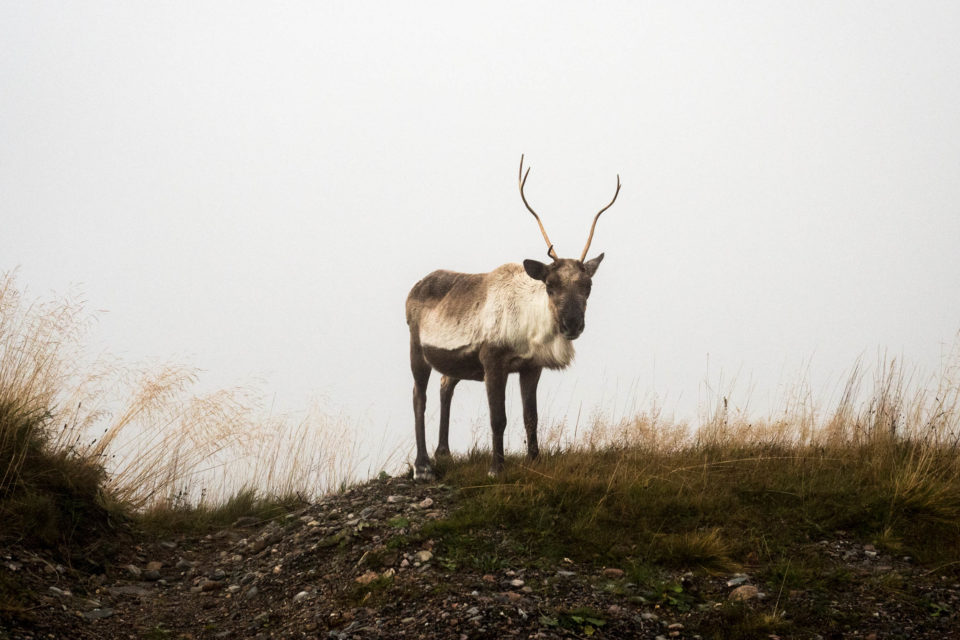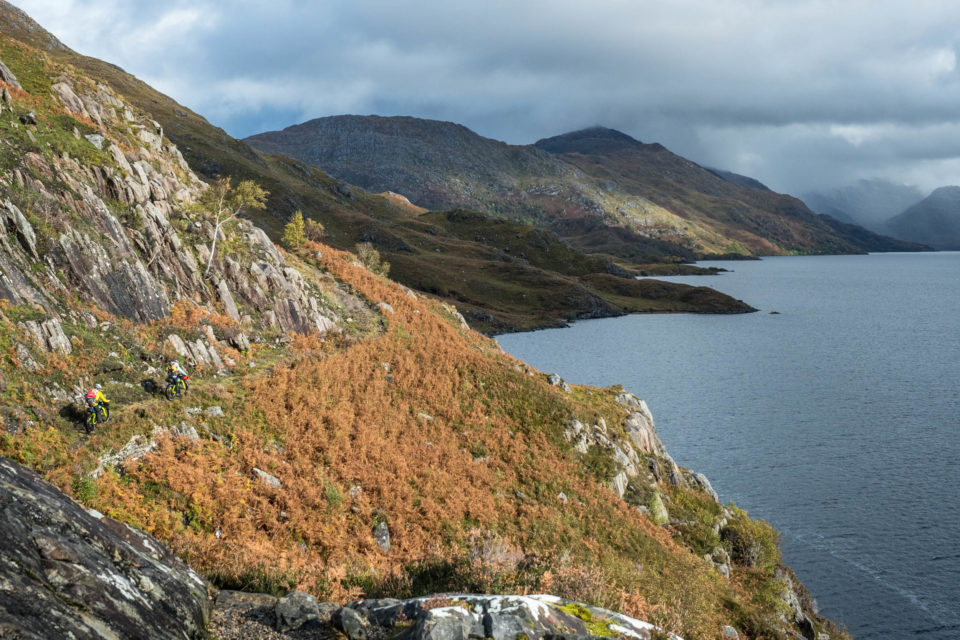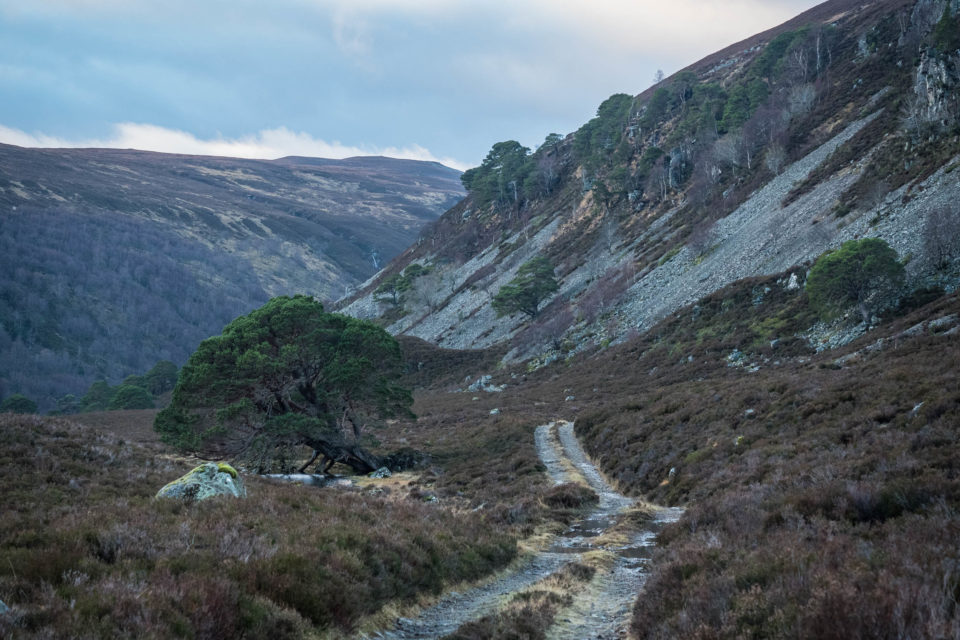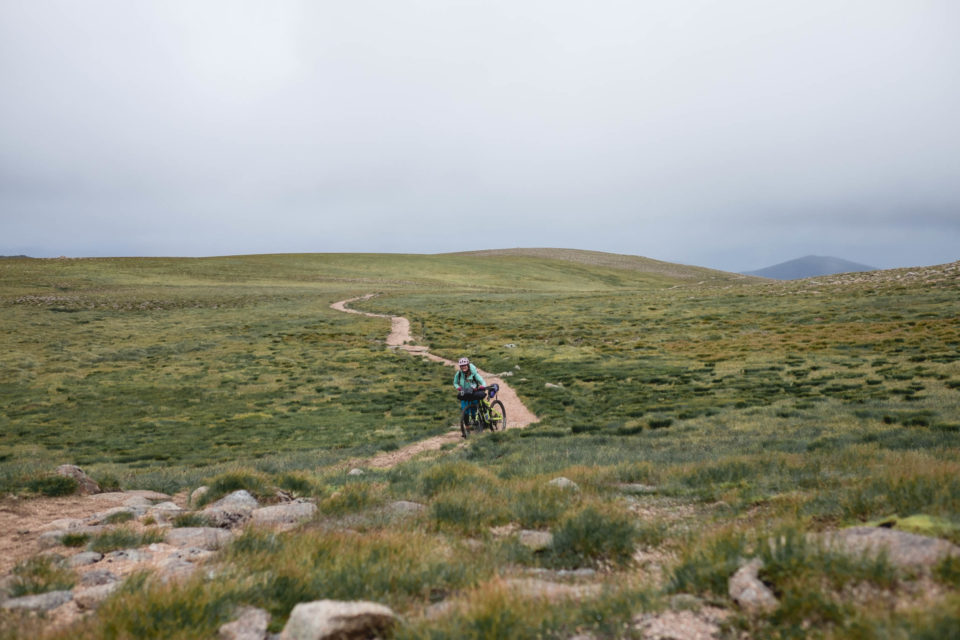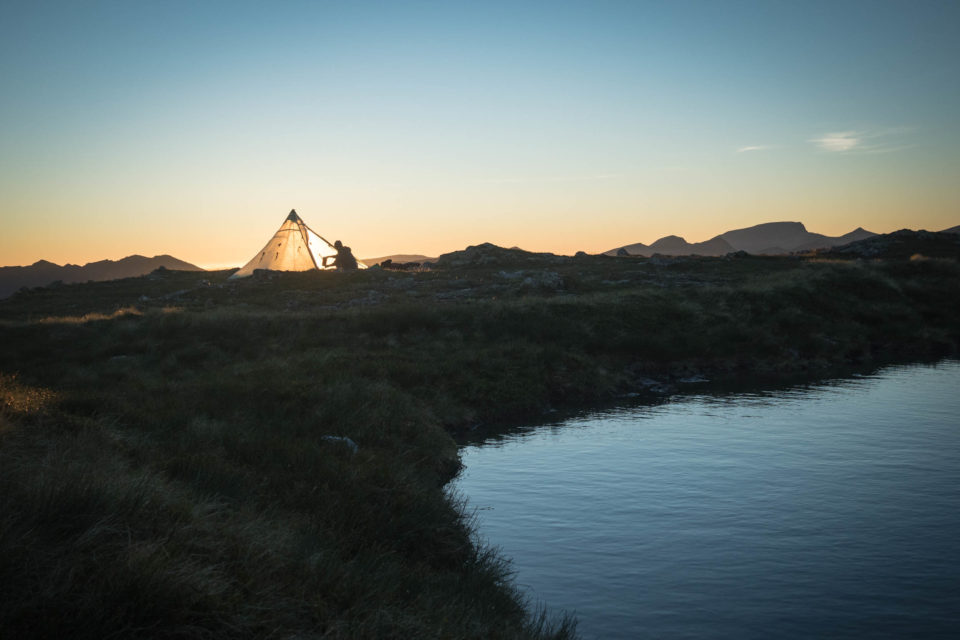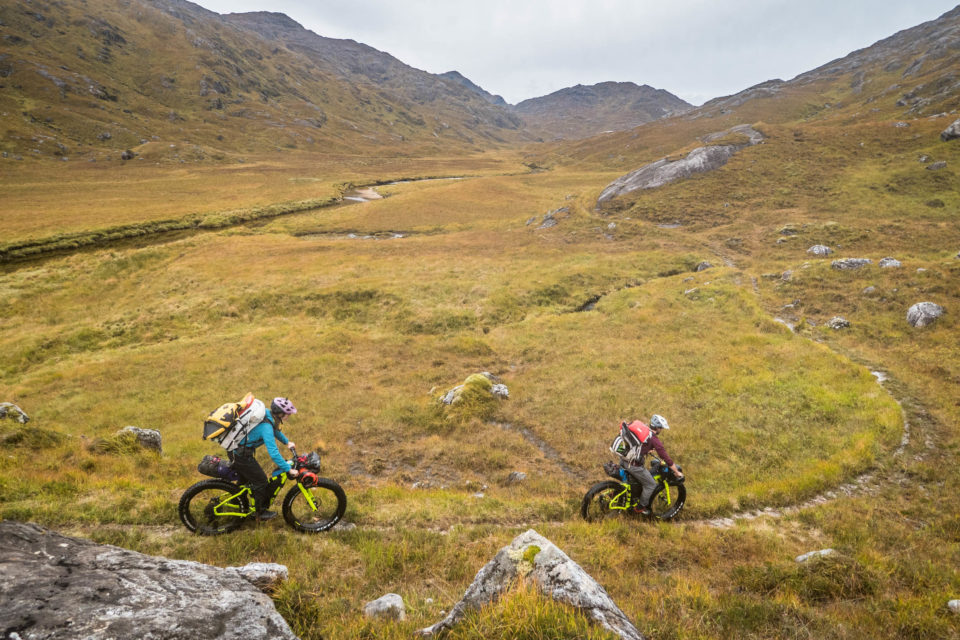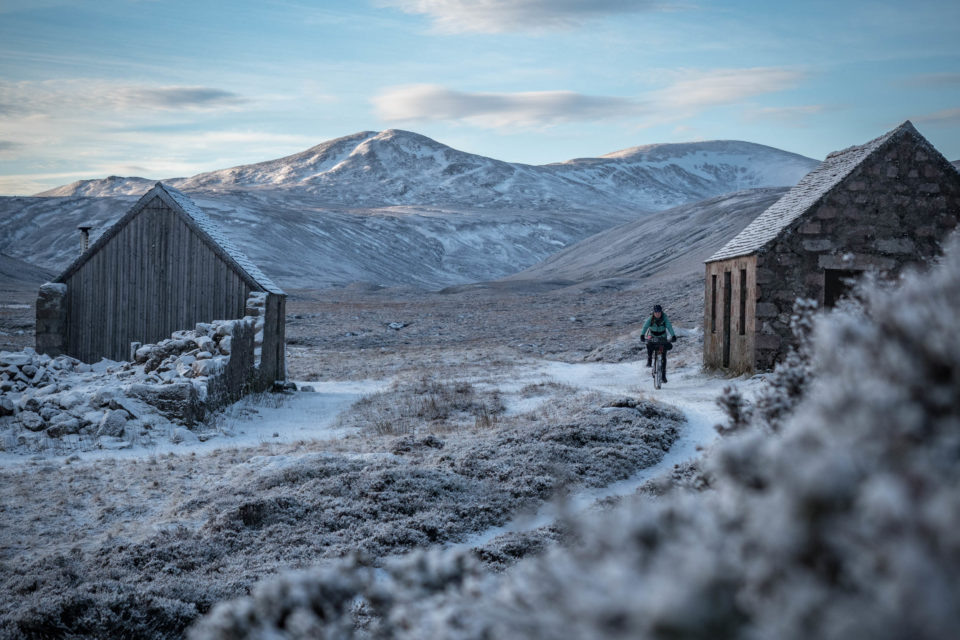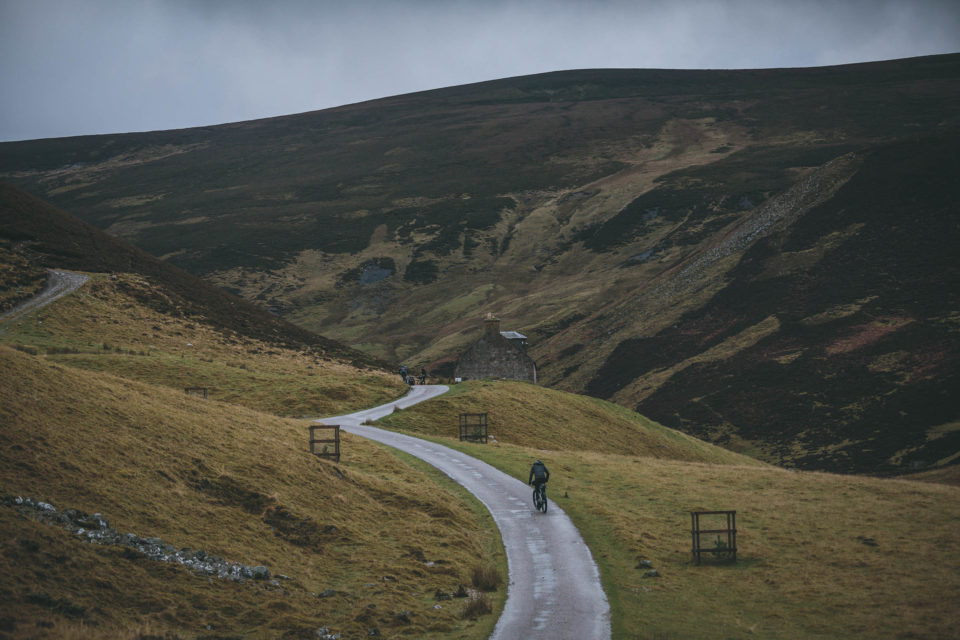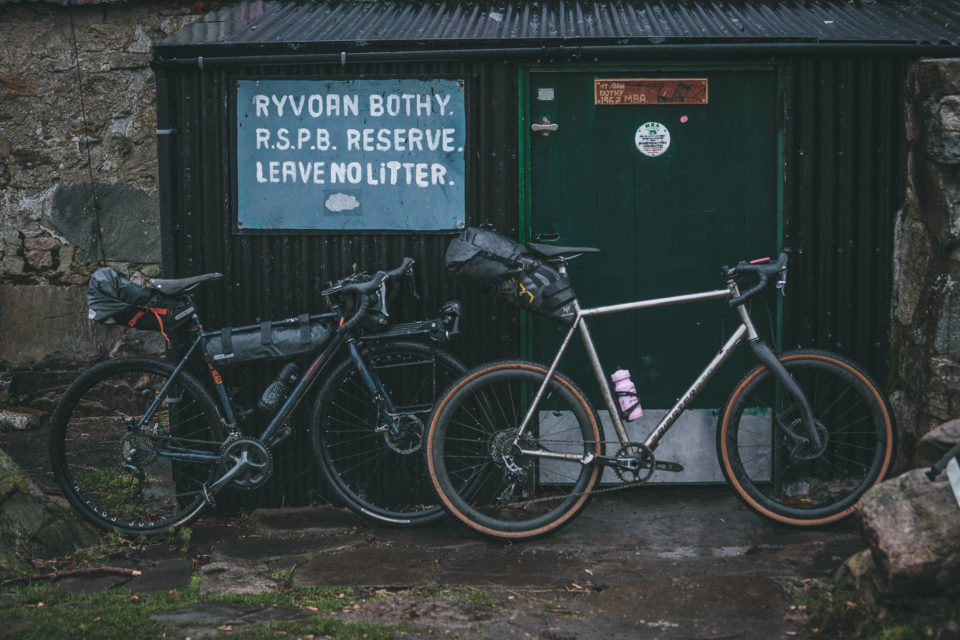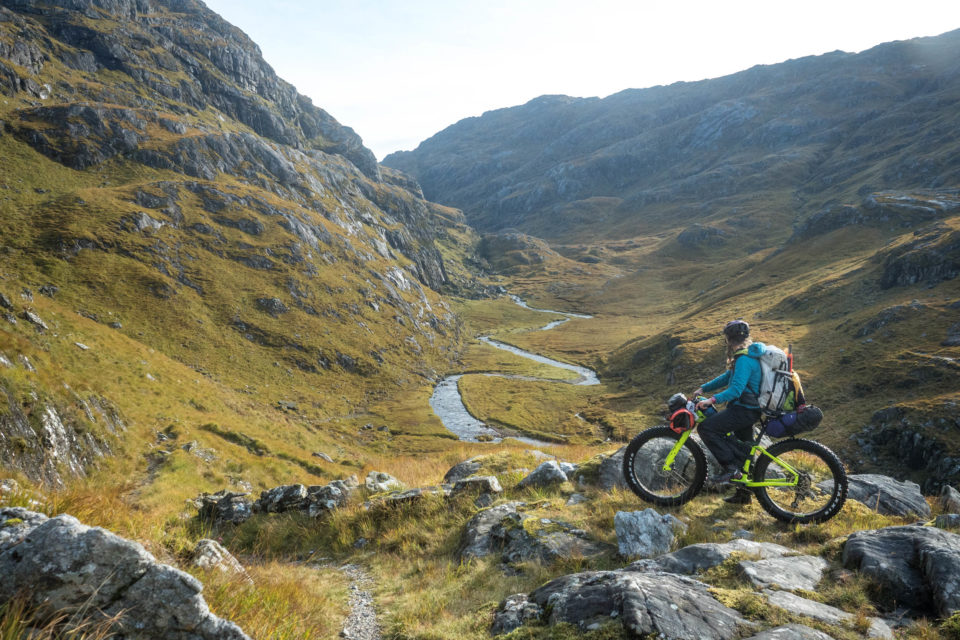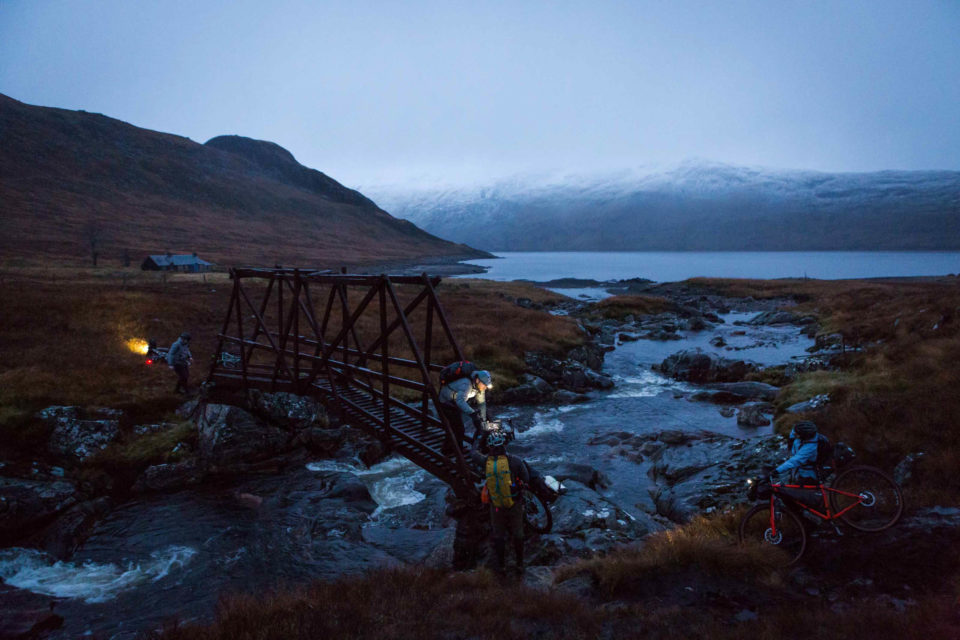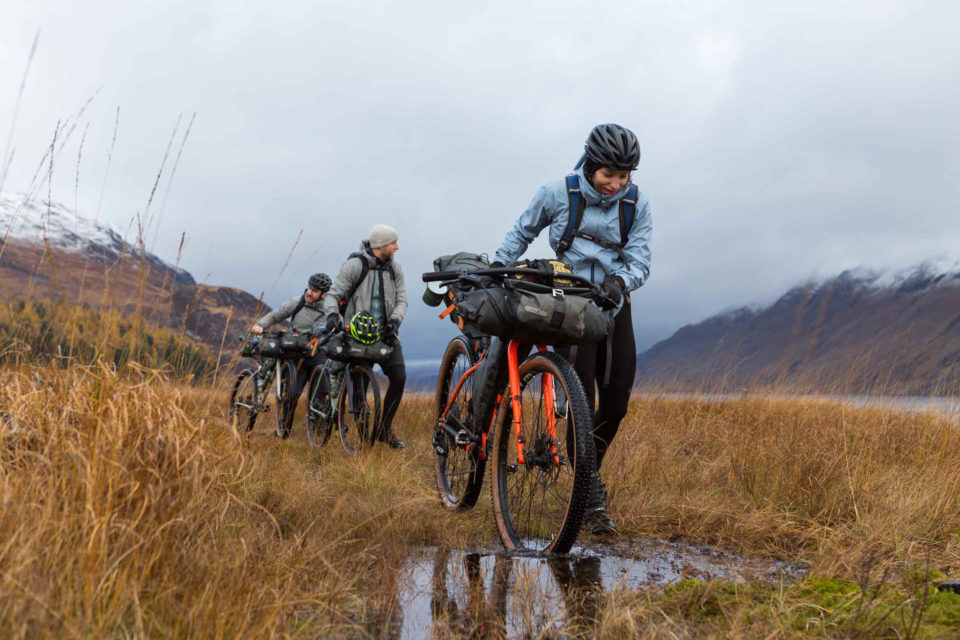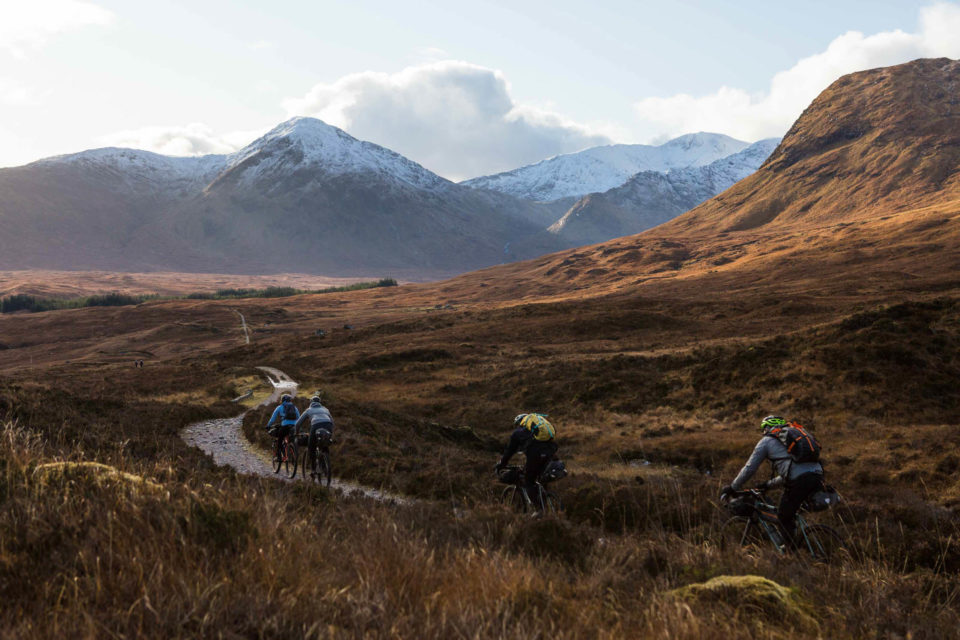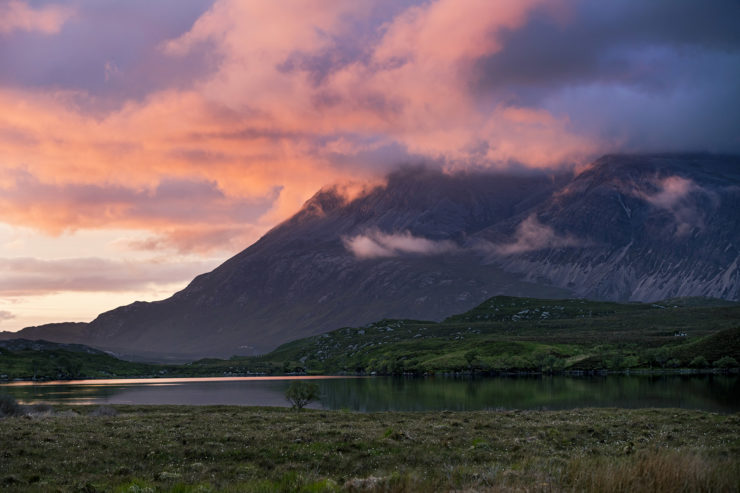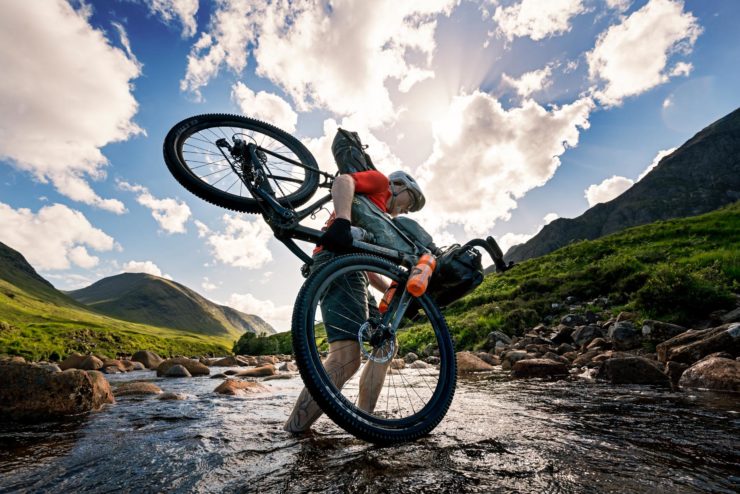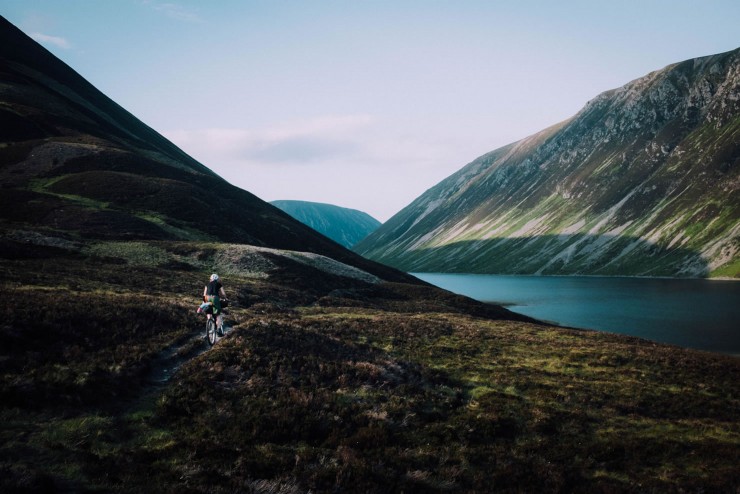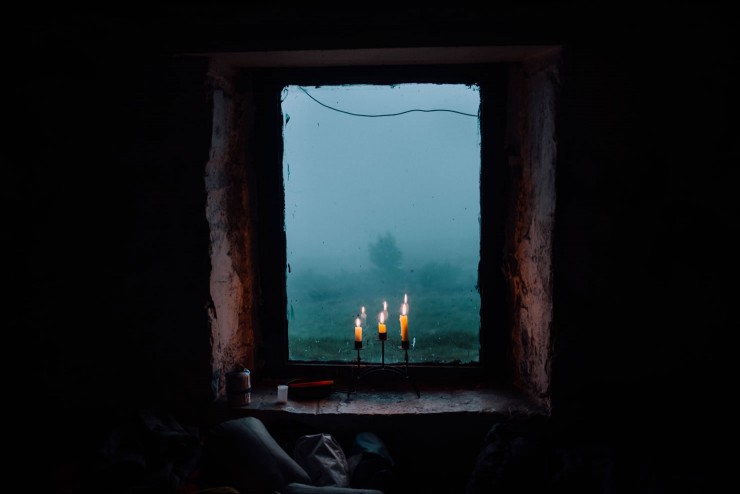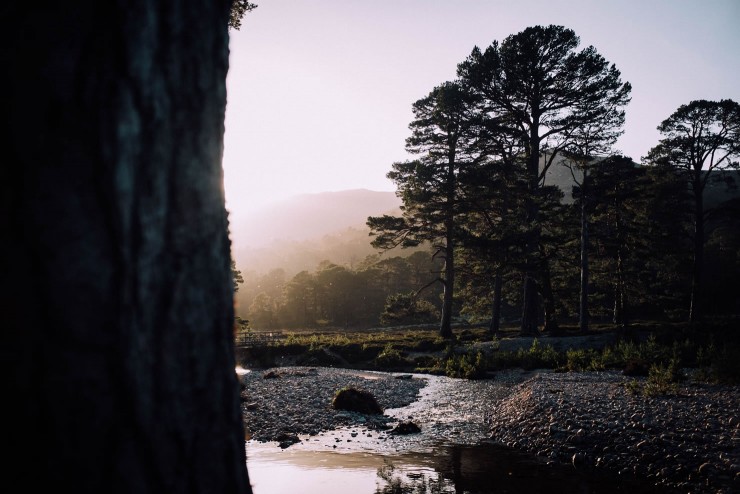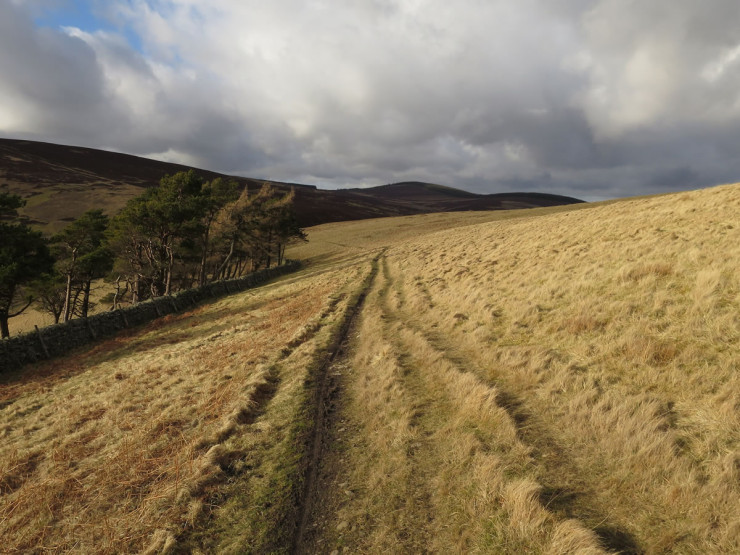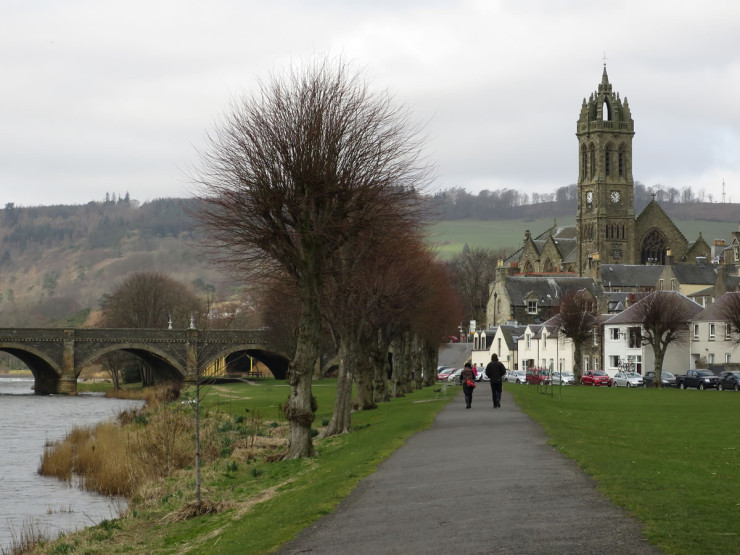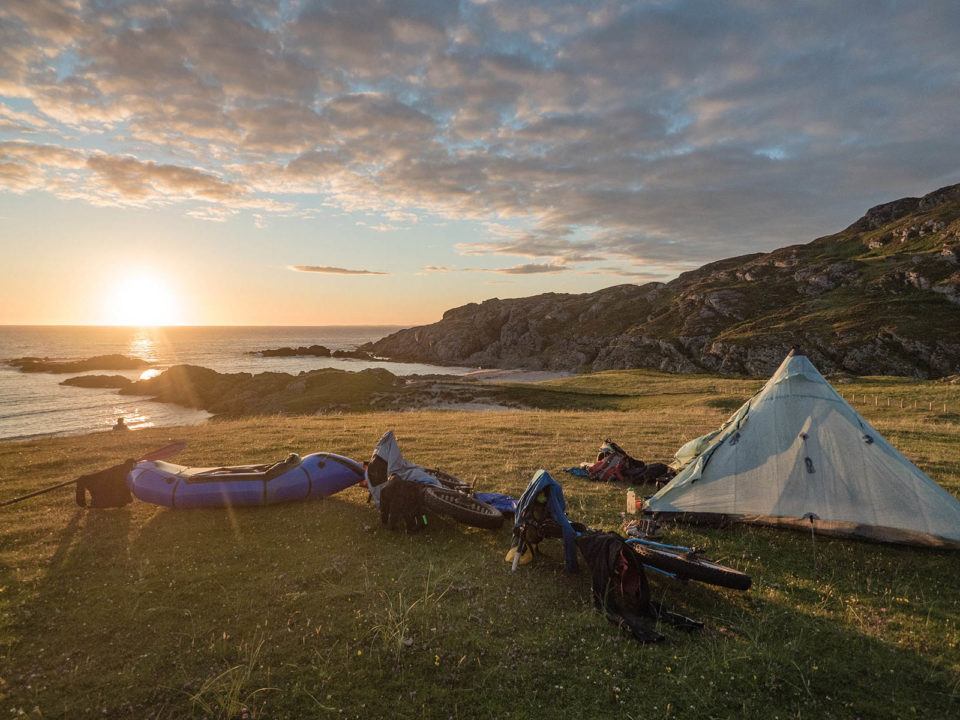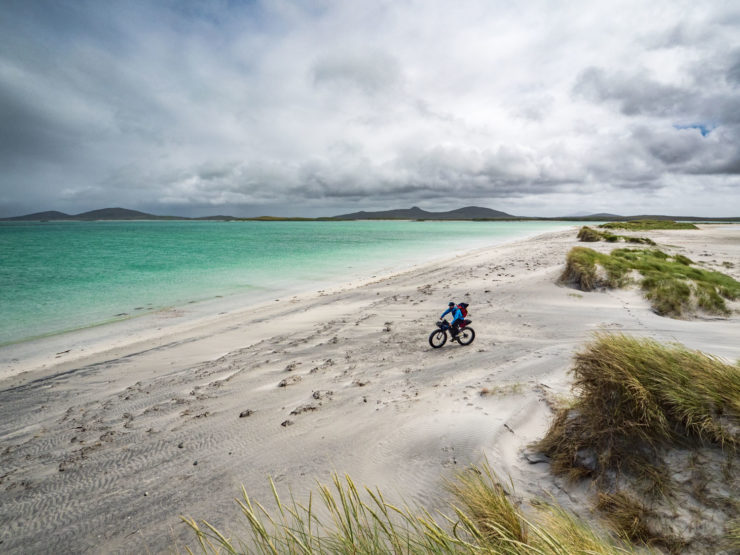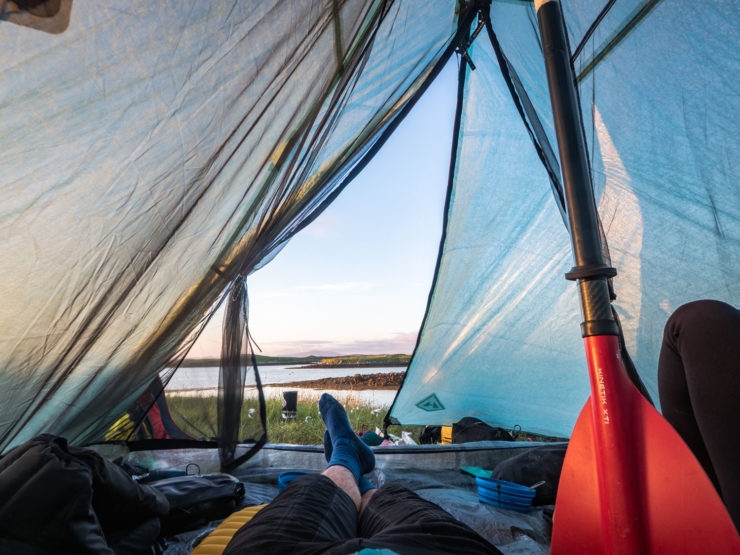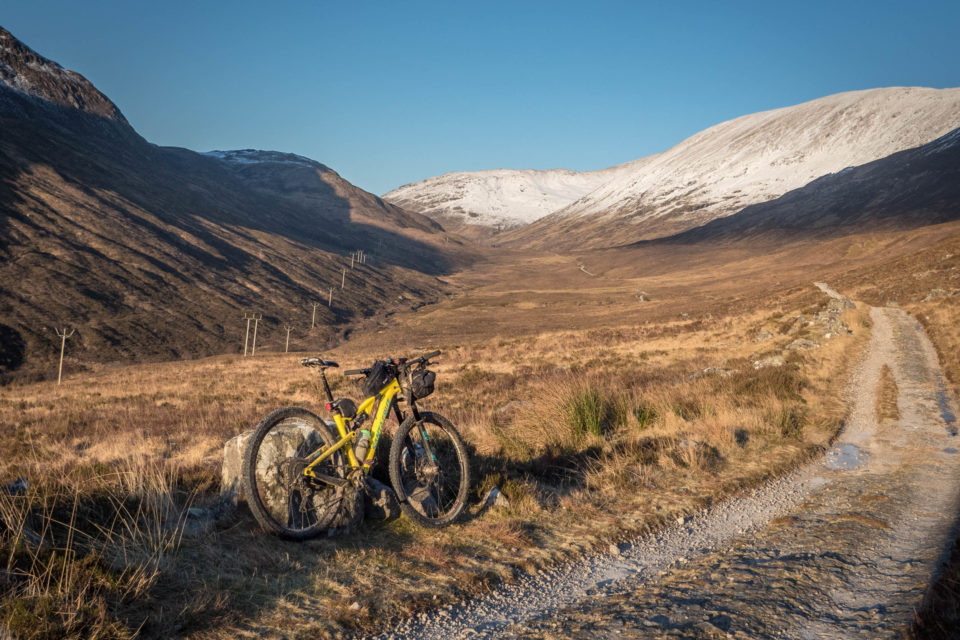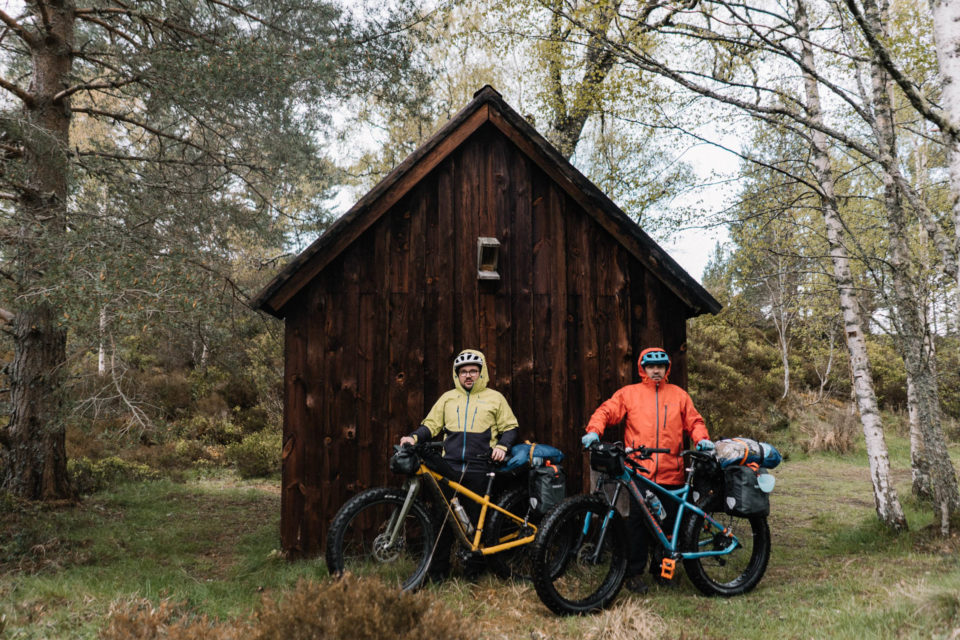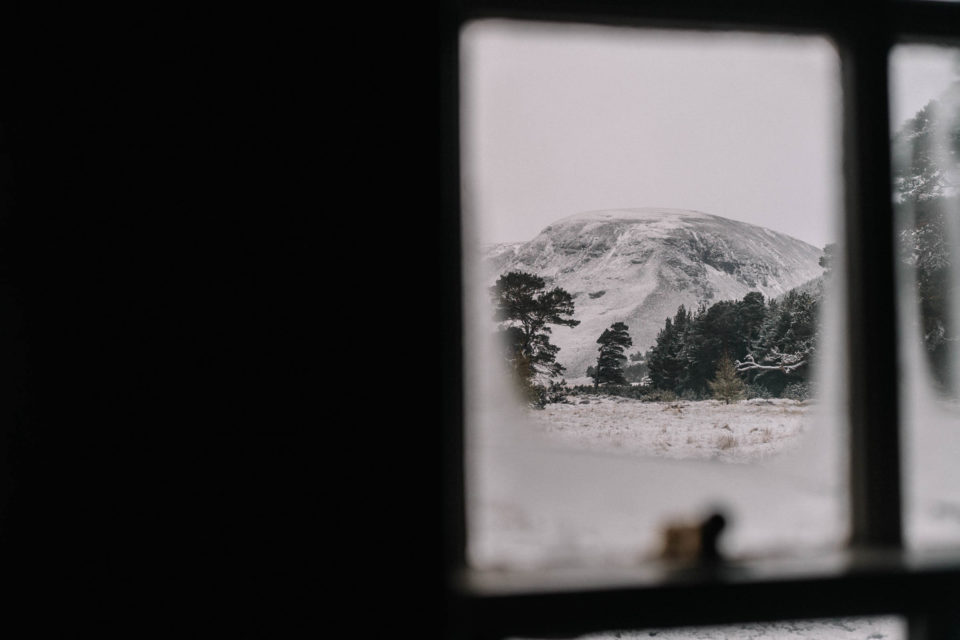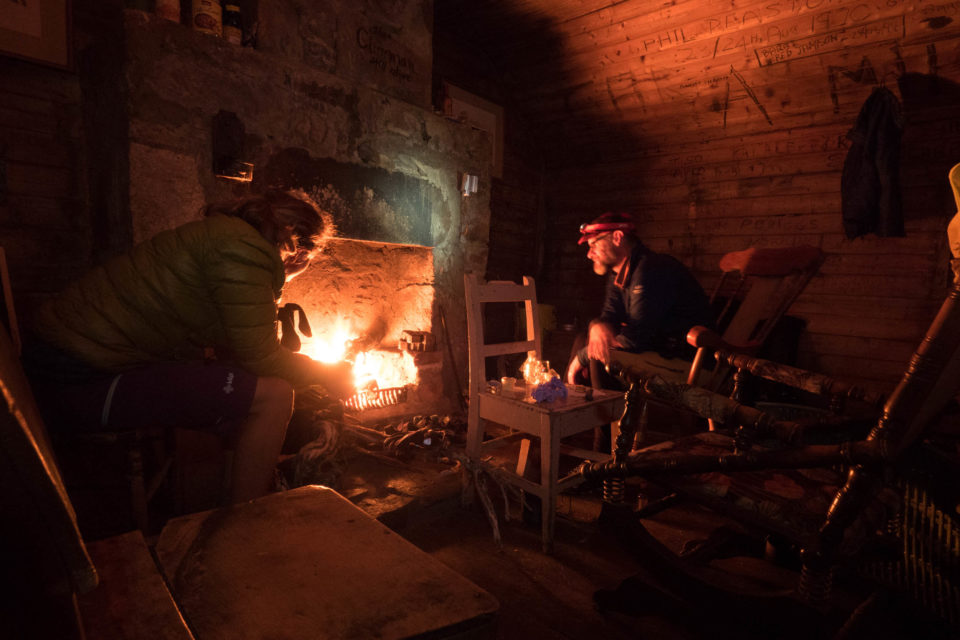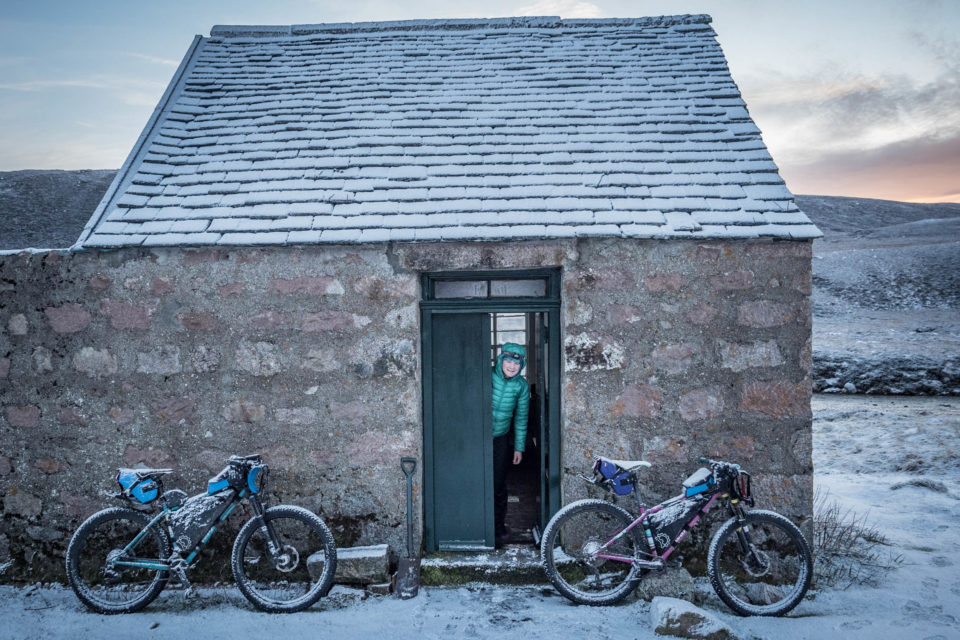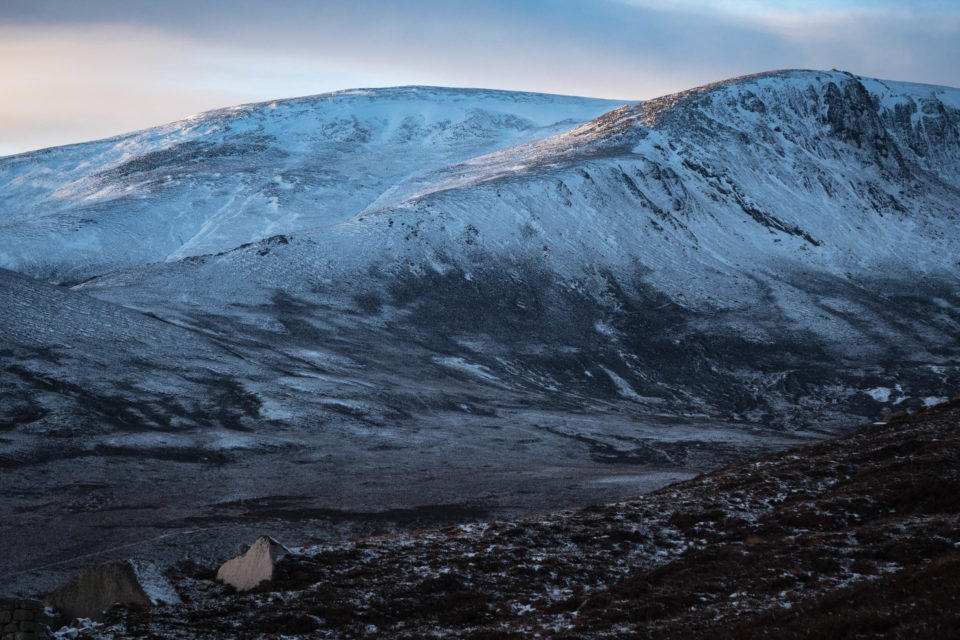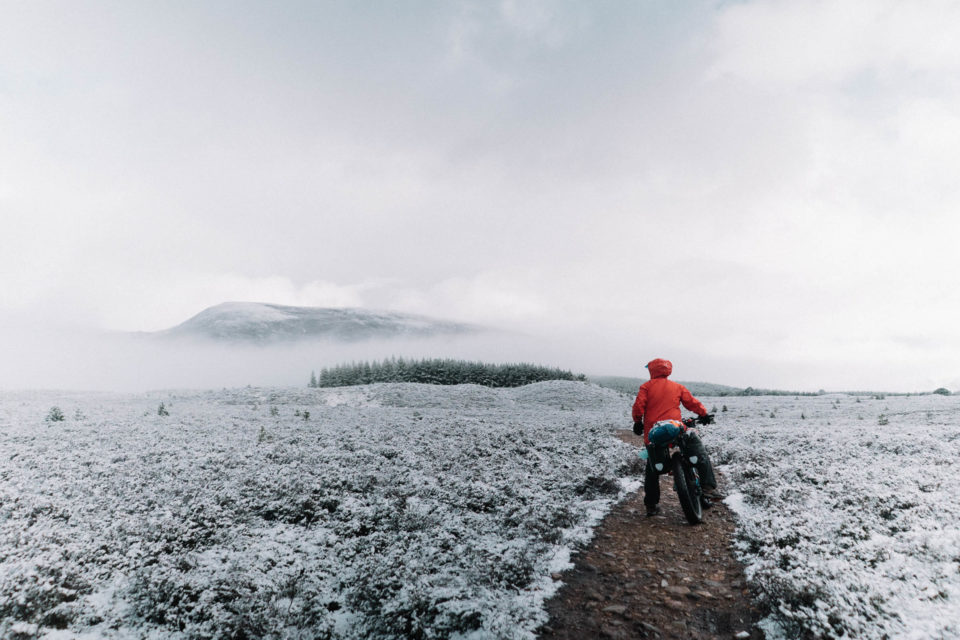The Complete Guide to Bikepacking Scotland
Share This
Scotland is perhaps the most captivating and storied bikepacking destination in the world, attracting countless intrepid cyclists every year. We asked our resident Scotland expert, Huw Oliver, to put together this comprehensive guide to help you plan your next bikepacking getaway to this enchanted land…
Scotland might be a relatively small place, but the folds of its hills and glens are packed with millennia of history, stories, and enough roads, tracks, and trails to keep a bikepacker busy for a lifetime. Scotland draws visitors from all over the world. Some of them come to buy tartan umbrellas and pretend they’re a blue-painted Mel Gibson, but a fair few of them come to ride their bikes. You might be drawn by thoughts of riding through lonely, windswept glens on trails deeply infused with history, or a cosy dram in the pub after a long day’s pedalling.
Table of Contents
Overview: Geography, History, Language, Outdoor Access Code, Transport and Logistics
Routes: Central and NW Highlands, Cairngorms, Central Belt and the Borders, The Islands
Gear: Bikepacking Gear, Clothing, Camping Gear
Weather, Planning, and Safety
Inspiration
Iconic routes like the Highland Trail 550 attract racers and tourers alike, but in almost every corner of this intricately connected country there are adventures to be had for those willing to embrace the challenge, ranging from ‘tarmac in name only’ to chunky, rugged mountainous singletrack. The weather will test you, but the people will welcome you, and for the curious bikepacker Scotland is unlike anywhere else.
Of course, if you fill in all the answers, then the adventure ceases to exist. But don’t worry, that’s not what we’re here for. If you’re already planning a trip to Scotland, or just looking for inspiration, the information presented in this guide is intended to be a springboard to get you on the right track. We’ll cover the essentials of ‘what’, ‘where’, ‘when’ and ‘how’. The ‘why’ will reveal itself when you get here.
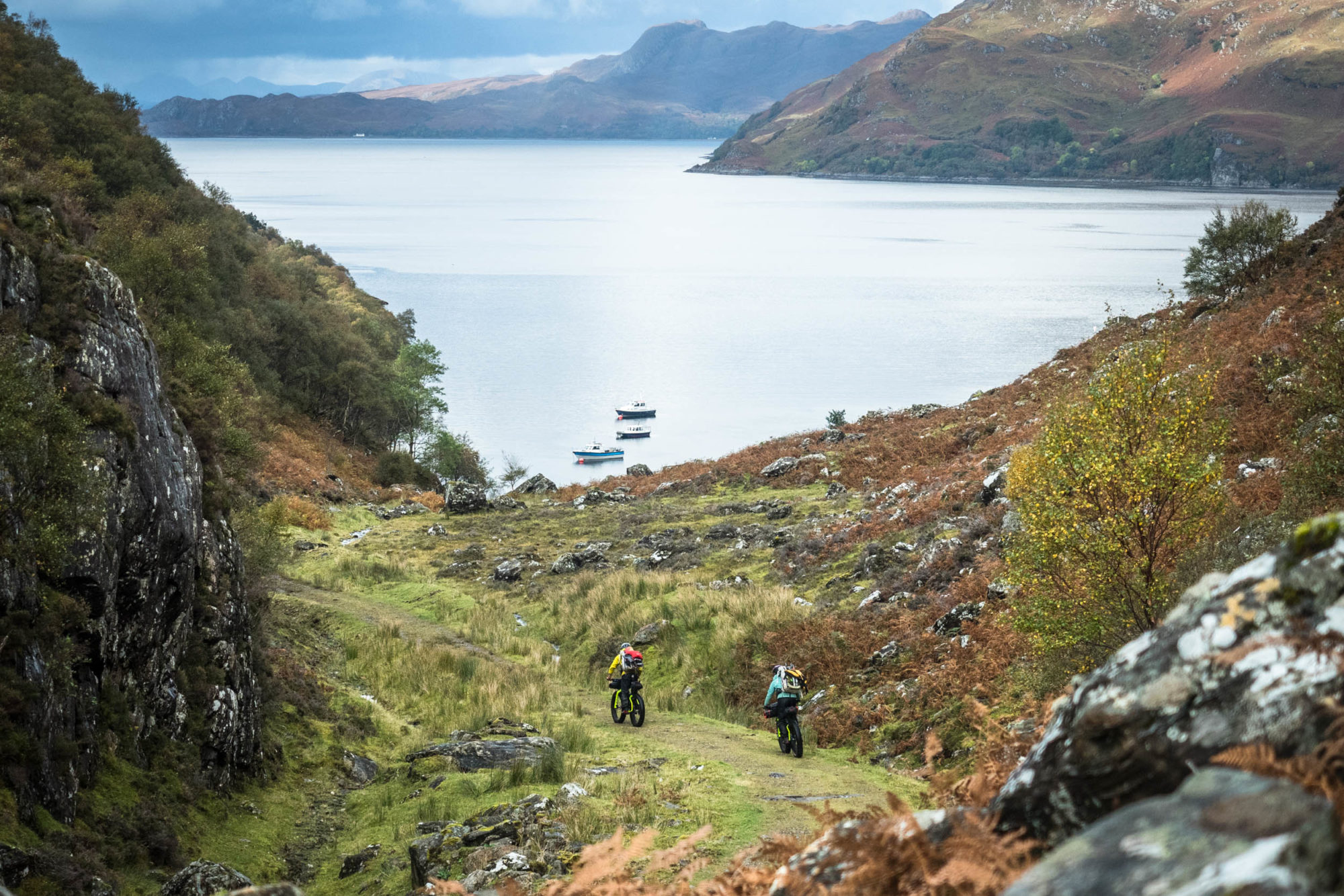
Overview
Scotland’s reputation outweighs its size, as though whoever was given the job of designing it gave in to temptation, and couldn’t resist squeezing just one more story into it. It’s a small country, occupying the northern third of mainland Britain, and home to around five million people. Similarly, Scotland contains more geography than it really should, and the landscape changes dramatically with just a few short miles of travel. At the border with England, the Southern Uplands’ rolling hills are dominated by moorland, sheep farming, and ancient hill forts, divided by forested valleys and rivers famed for their salmon. Moving north, these give way to the densely populated Central Belt, in the low-lying valleys of the rivers Forth and Clyde. The memories of shipyards, coal mines, and empire-building industry still snake through the commuter towns and post-industrial cityscapes. The two major cities of Edinburgh and Glasgow eyeball each other from opposing coasts.
Further north, the Highland Boundary Fault marks the abrupt rise of the Highlands themselves, the mountainous half of the country that extends all the way to the northern coast. They rise to high points of the Cairngorms in the east, and the volcano-born peaks of Ben Nevis and Glencoe’s famously jagged skyline. Fringing the west coast lie over 900 islands, among which the larger islands of Mull and Skye, and the long archipelago of the Outer Hebrides, are home to their own unique geographies and ecosystems. In the ancient rocks of the far north, monolithic mountains stand proud and isolated on plains of ice-scoured bedrock.
The highest point, the summit of Ben Nevis on the west coast, stands at 1,345 meters (4,412 feet), not so impressive on paper, but anyone standing in the teeth of its frequent storms would beg to differ. In total, there are 282 mountains over 914 meters (3,000 feet) in height, which are known as munros. Alongside many beautiful rivers are innumerable lochs, ranging from the infamous Loch Ness, Scotland’s biggest by volume, to Loch Lomond, which is the largest by area. The only lake in Scotland is the Lake of Menteith, near Stirling. The far north west Highlands and the Outer Hebrides are more water than land in some places, where the water has filled the many hollows left by glacial ice to leave a landscape known as Cnoc and Lochain. The impact of the ice can be seen all over the Highlands, especially in the long, fjord-like sea lochs of the west coast.
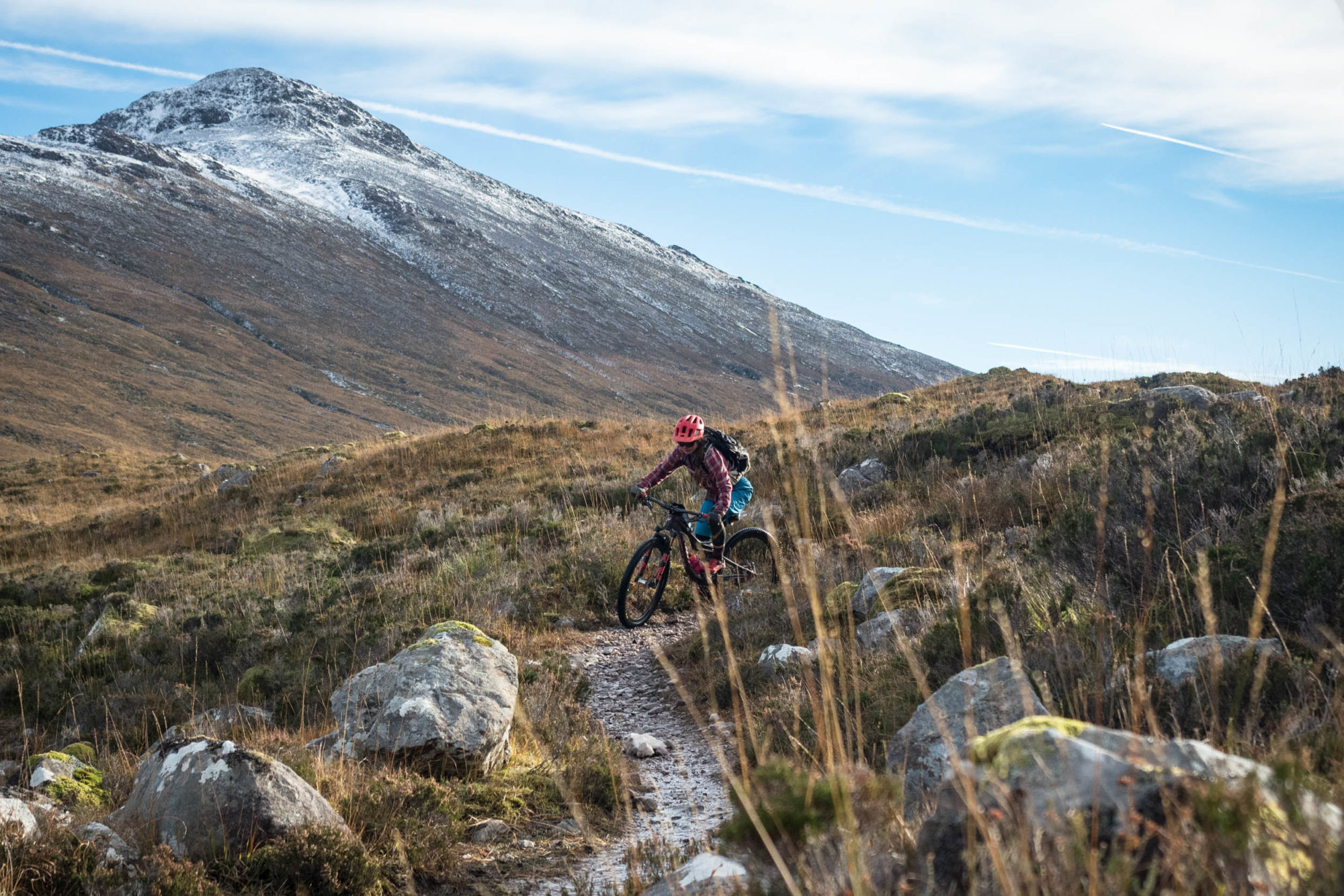
Geology
The Highlands themselves are a geologist’s dream, containing hugely varied rock formations all packed tightly together. Before the opening of the Atlantic Ocean, Scotland was originally part of the North American continent and separated from England by an earlier ocean. The two merged, and modern day North America split off again around 60 million years ago. The resulting rift can be seen today as a string of dramatic volcanic calderas down the west coast, such as the one at Ardnamurchan point, or the islands of Rhum and Skye.
The relevance of geology to bikepackers is, literally, right at our feet, and riding here is a great way to see the ground change beneath your tyres. The high plateaux of the Cairngorms, in the east, are the eroded remains of a huge, sub-surface pocket of magma that slowly cooled to form the rounded, grippy granite that you will experience as a satisfying ‘brrrrt’ noise as your tyres stick to it like glue. In Torridon, the mountains’ sandstone midslopes give way to upper slopes of angular white blocks of quartzite that will terrorise your tyres and give the mountains the appearance of being dusted with snow even in midsummer. Even the capital, Edinburgh, has a skyline that is dominated by the extinct volcano of Arthur’s Seat.
Wildlife
Scotland’s wildlife has struggled against over-exploitation of mountain land and persecution of predators by sporting estates, whose primary interests are in raising numbers of target species (generally red grouse and red deer) at the expense of habitat and species conservation, although this tradition could be in the process of changing for the better. The red deer is easily recognisable, and the famous painting Monarch of the Glen was painted in a cottage that riders can pass right by in Glen Feshie on the Cairngorms Loop, though only the chimney stack now remains. The golden eagle is the most well-known bird, and both they and the larger white-tailed eagle can now be seen frequently, on the islands in particular. The Capercaillie, a species of giant grouse, is a rare but welcome sight in the Scots pine forests of the Cairngorms, as is the Crossbill, the pine marten and the critically endangered Scottish Wildcat. The fox is the largest land predator, but plans for a controlled reintroduction of the Eurasian lynx are gathering momentum.
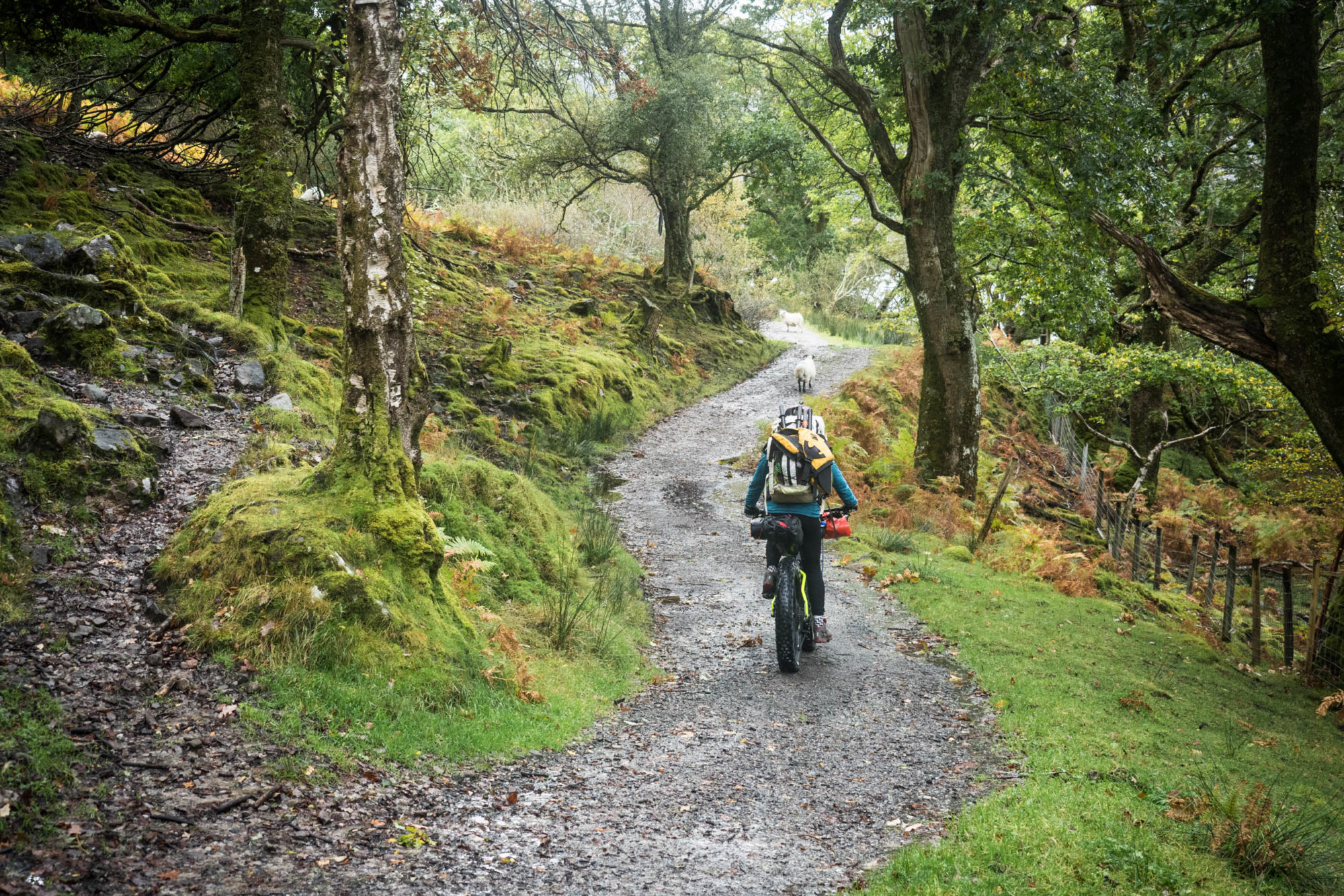
History
The Romans did conquer England and southern Scotland, but the Forth-Clyde isthmus marked the northernmost reach of their control, and they abandoned it around 165 AD. One of the larger Roman camps at Trimontium in Melrose lies on the route of the Capital Trail, and the route itself follows the Roman route as it travels south along the ridge from lauder to Melrose.
The Dark Ages saw Scotland as three kingdoms: the Picts in the north-east, Anglo-Saxon Northumbria in the south-east, and Dál Riata in the west, which was a product of gaelic-speaking Irish settlers. After Viking raids began in the 8th century, the northern and western isles and much of the west coast were governed from Norway. The Gaels were pushed west and formed a kingdom known as Alba, while the Pictish kingdom ceased to exist. Modern day place names still give evidence of the old boundaries of these three Pictish, Gaelic and Norse-speaking worlds.
‘Scotland’ as a nation-state emerged in the 12th and 13th centuries, until the death of Alexander III in 1296 broke the line of succession and led to the Scottish Wars of Independence. Yes, that’s right: Mel Gibson wearing blue paint. Scottish history always seems to come back to that at some point. For the bikepacker, another series of battles in the 18th century has a more visible legacy, though. In 1746, the Jacobite rebellion led by Charles Stuart (‘Bonny Prince Charlie’) was roundly defeated by the British government at Culloden, just outside Inverness. In the aftermath, the government ordered General George Wade to build a series of new roads and forts to be built to suppress any further unrest in the Highlands, and many of those roads are still in use today. The Highland Trail 550 route uses them extensively, on the famous Corrieyairack Pass as well as the lonely miles across Rannoch Moor. The forts at Fort William, Fort Augustus, and Fort George, near Inverness, also date from the aftermath of Culloden.
Other, older roads are likely to be encountered, like the drove roads which were routes for livestock to be taken from rural farms to markets in the towns and cities. The Cairngorms loop makes heavy use of them through natural features like the Gaick Pass and the Lairig an Laoigh (Gaelic for ‘Pass of the Calves’). Applecross’ spectacular Bealach na Ba, ‘pass of the cattle’, is another. In several places, ‘Coffin Roads’ were routes that took the most direct line from a settlement to the nearest consecrated ground, as that was the customary way to take the dead to be buried. If you’ve ridden—or more likely pushed—the coffin road from Letters to Dundonnel on the Highland Trail 550 route, then you’ll know that direct can mean ‘steep’!
The Clearances emptied the Highlands of much of their human population, but the system of land ownership is largely intact and private landowners own huge tracts of land. In recent years community buy-out schemes have sought to redress the huge imbalance of land ownership in Scotland, but the fact remains that the Highlands in particular suffer from a poverty of land democracy stemming from the gradual transformation of clan chiefs into private landowners.
Scotland’s history is a turbulent one, and a whole library would be needed to cover the subject. If you want to understand just how inadequate any brief summary of the nation’s history really is, it’s worth dipping into Neil Oliver’s A History of Scotland for good tent reading, although the Kindle version fits a little easier in your pannier. Some episodes of Scotland’s history are particularly relevant to the bikepacker as they explain some of the sights and place names you’re likely to see on your travels. The National Museum of Scotland, in Edinburgh, is also well worth an afternoon’s wandering at the start or end of a trip.

Language
English might be the dominant language in most of Scotland, but both Gaelic and Scots English are also officially recognised. The traditional Gaelic is making a small resurgence, in fact. Gaelic speaking is concentrated in the north west, and in particular on the Outer Hebrides, where it’s not unusual to overhear a conversation or two in the local shop. Combine that with the wealth of broad accents to be found—looking at you, Glasgow—and the Norse and Pictish heritage found in place names, and the newly arrived bikepacker might benefit from a quick introduction to the linguistic hoops that they might have to jump through, not to mention the clues and stories to be found in names seen on the map.
As a primer, here are some common words you might hear on the trail, or want to use yourself:
The Weather
Shmung — See above—implies foggier weather than dreich
Bogging — See above
Minging — And again
Roastin’ — Hot weather—rarely used
Taps Aff — Weather hot enough to take your top off/any temperature above 10°C
Trailside
Peely wally — The national complexion—meaning pale/white
Faff — Commonly encountered. Both a verb and noun, meaning to take longer than needed to do something, e.g. ‘He’s having a right faff today’, or ‘Stop faffing aboot!’ Other forms include Faffer (n.) and Fafftastic (adj.)
Knackered — Tired out/broken
Gubbed — See above
Blether — Related to faff. Having a long conversation.
Braw — Pleasant/beautiful. ‘It’s a braw day the day’.
Dinnae fash — Don’t worry. ‘Dinnae fash, I’ll have this fixed soon’.
Steamin’ — Extremely drunk. Hopefully not experienced trailside, but possibly in the pub later.
Glaikit — Stupid
Sprackling — Moving clumsily—possibly the day after being steamin’ in the pub.
Place Names
On arrival in the Highlands you’ll see road signs written in both English and Gaelic. Scottish Gaelic (‘gallic’) is distinct from, but related to, Irish Gaelic (‘gaylic’). The Gaelic alphabet has 18 letters, missing the J, K, Q, V, W, X,Y, and Z of the English alphabet, and each is named for a tree or plant, hence the A, B, C of Ailm, Beith, Coll—elm, birch and hazel. Today, Gaelic is most commonly spoken in the north west and on the islands, particularly the Outer Hebrides, but it’s enjoying a modest resurgence, and its legacy lingers throughout Scotland in the form of place names. With the knowledge of a few common words, those names on the map can begin to tell a story of what you might find there, or what they once meant to people. A fantastic and more comprehensive guide to Gaelic pronunciation and names can also be found via the Ordnance Survey for those interested.
A simple glossary of Gaelic place names:
Allt — A burn, or small stream
Bàn — White, pale in colour
Beag — Little
Bealach — Pass, col
Beinn — Mountain
Bodach — Old man, spectre
Buachaille — Shepherd
Buidhe — Yellow
Camas — Bay, harbour
Caolas — Narrow strait
Càrn — Pile of stones
Ceann — Head, headland
Coire — Cirque, hollow in a hill
Coille — Wood, forest
Creag — Crag, cliff
Damh/daimh — Stag
Dearg — Red
Dubh — Black
Drochaid — Bridge
Dùn — Fortress, castle
Eas, easan — Waterfall
Feìth — Bog
Fraoch — Heather
Gleann — Glen (valley)
Inbhir — Mouth: usually of a loch or river
Iolaire — Eagle
Lairig — Pass, col
Loch — Lake, or fjord
Lochan — Small lake
Monadh — Mountain
Mòr — Big
Rathad — Road
Ròn — Seal
Ruadh — Red, brown
Sgòrr — Sharp, rocky peak
Strath — Wide river valley
Taigh — House
Uaimh — Cave
Uaine — Green
Uisge — Water
These are just some common place name elements, but by putting them together we can learn that the iconic hill Buachaille Etive Mor is ‘the big shepherd of Glen Etive’, and that Am Monadh Ruadh are ‘the red mountains’.
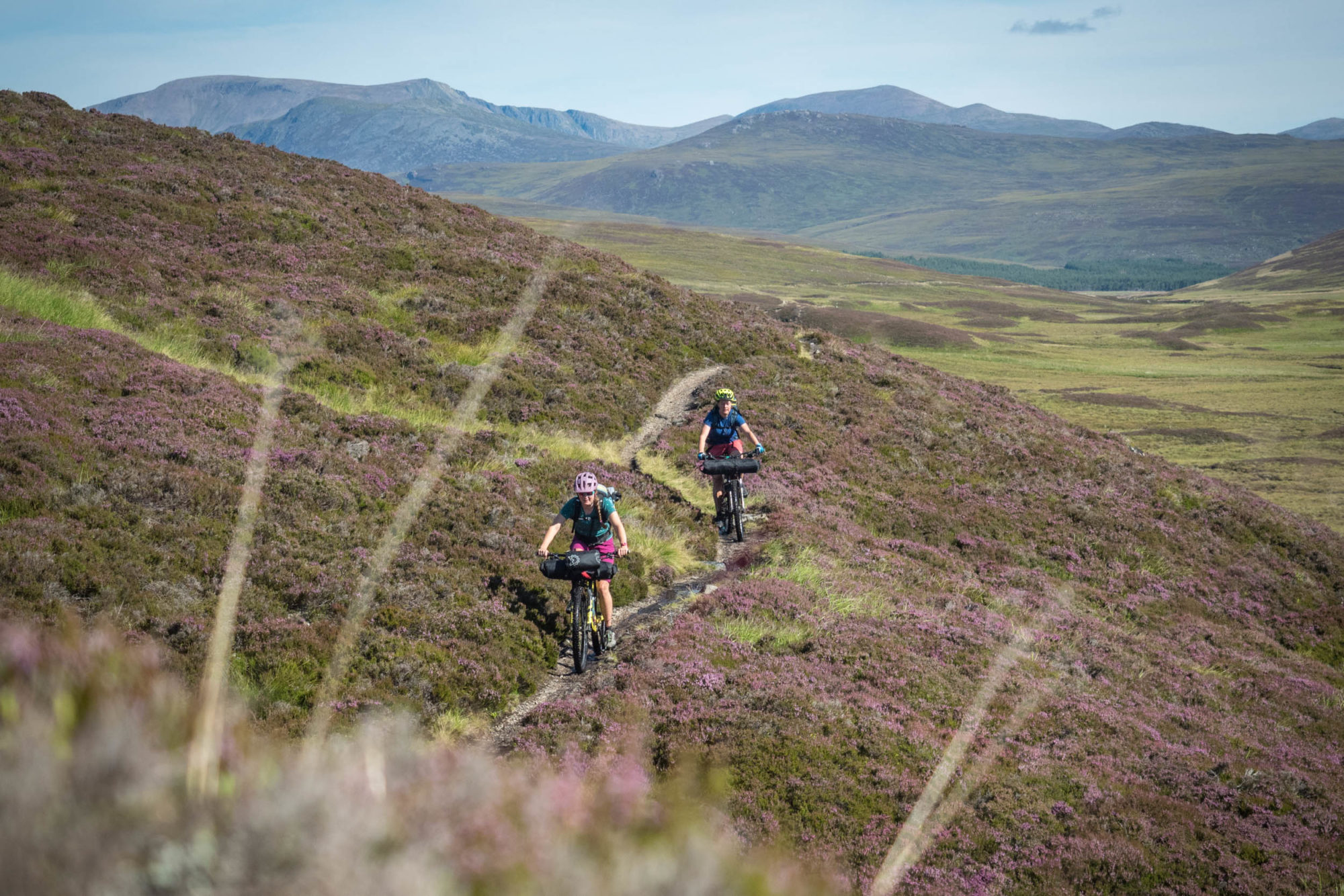
Outdoor Access in Scotland
Unlike those south of the border, in Scotland we are lucky enough to enjoy a universal right of outdoor access. Along the lines of Sweden’s allemansrätten, we have the Land Reform (Scotland) Act 2003 to thank for that. It’s a precious and relatively recent change to the way Scotland views the public relationship with its land. This means the vast majority of Scotland’s land and waterways are open to public access by non-motorised means, and the access code doesn’t discriminate between foot and bike traffic. There are exceptions to this freedom of access, the most obvious being gardens and fields with crops in them. Most importantly, this right of access only applies if it is exercised responsibly—be that by respecting other users, taking litter out with you, or respecting the natural environment. It’s worth familiarising yourself with the Outdoor Access Code before you travel.
Thankfully, that right to access also extends to camping—again when done responsibly and in such a way as to minimise impact. A notable exception is a small zone in the Lomond and Trossachs National Park, which has a by-law allowing camping only in permitted areas between March and September. More information can be found on the park’s website.
Transport and Logistics
Getting to Scotland
Scotland is simple enough to get to, and depending on your start point you might use road, rail, water, or air travel to get here. Or even your bike!
Road travel is fairly straightforward. The A1 on the east and (more likely) the M74 on the west offer easy cross-border transport if coming up from England. Ferries from Belgium, the Netherlands and even Norway can get you to Hull or Tyneside on the east coast of England if you want to shorten the trip from the continent.
By rail, east and west coast mainlines run north from England to Edinburgh and Glasgow stations, or northwards to Inverness and Fort William, which is particularly handy if you’re planning an A-to-B route. However, although rail companies are keen to appear bike-friendly on paper, that isn’t always the case on the ground. Recent investments in ‘bike carriages’ and greater acceptance of bikes will hopefully improve things. Generally, trains don’t have many spaces for bikes and you often need to reserve a (free) space for your bike before travelling. This isn’t always possible when plans become fluid, so in a pinch a friendly manner toward the conductor is definitely the way to go, and you’ll often find that they will help you out. Don’t bank on it though, and it is worth checking to keep unnecessary levels of stress out of your life. Frustratingly, your means of doing this vary, depending on who you buy your tickets from, but the National Rail and ScotRail websites have good resources to help you work out what you need to do. The Cycling Scot’s guide on the subject also has some useful information.
Air travelers are likely to arrive at Edinburgh or Glasgow airports, which both have good transport links. However, if you’re bringing a bike in a box it’s worth noting that Glasgow has no direct-to-rail link, and needs a bus journey if you don’t want to hire a car or drive. Buses in Scotland can be tricky to navigate with a bike (easier if it’s still in a box), again subject to how friendly the driver is feeling, so be prepared to crack out your best smile. If you do want to take your bike on the bus, it’s best to contact the route operator and get written confirmation to show the driver. One exception is the Borders Bike Bus, which handily links Edinburgh to a couple of points on the Capital Trail Route.
Visas
You will of course need a valid passport to visit the UK and Scotland (or a national identity card if you’re from an EEA country or Switzerland). European Union and Swiss citizens don’t need a visa, either. Visit Scotland has a handy guide for travellers, as well as advice on what may or may not change when/if the UK works out what on earth it’s doing with regards to Brexit.

Routes
These routes already have their own in-depth route guides and additional resources, including BIKEPACKING.com’s ever-growing route library. Follow the links to get detailed information for each route, browse the list to find inspiration, or link existing routes together using your imagination!
Central and West Highlands
Highland Trail 550
Badger Divide
Drover’s Route
Wild About Argyll
An Turas Mor
Cairngorms
The Cairngorms Loop
Deeside Trail
Central Belt and the Borders
Capital Trail
Reiver Raid
Fife Fandango
- Coming soon!
The Faultline Trail
The Islands
Other route resources worth browsing include Bikepacking Scotland, Sustrans, and Cycling UK’s Great North Trail.
A Note on Mapping
Your preferred Ordnance Survey (OS) mapping app will likely have good coverage and accuracy in Scotland. However, if you’re travelling from abroad you might not have heard of the Ordnance Survey, which is the UK’s national mapping agency. Its origins lie in the need to accurately map the more remote areas of the country, such as the Scottish Highlands, to allow government forces to quash Jacobite rebels in 1745. Their maps cover the entire country and are easily available in 1:50,000 and 1:25,000 scales, with 1:50,000 being the most useful for cyclists. On the smaller-scale maps, fence lines and even large boulders are mapped with astonishing accuracy, and they’re as much a work of art as a planning tool. While you might like the look of a map sheet on your wall at home, for easier access in your pocket, the OS Maps App is worth downloading to access them. Viewranger is another popular option.
Gear
Gear choices are, of course, a hugely subjective thing, but if you’re coming from the deserts of Arizona or somewhere similar then you might find a couple of handy ideas below. If you’ve never felt the need to wear waterproof shorts before then it’s probably worth reading on!
Bikes
As ever, ‘run what you brung’ is the best philosophy. But if you have the luxury of choice, be aware that Scottish trails are generally on the rougher side and prone to being muddy. Tyres on the comfortable side of the spectrum and with a little bite are generally the best. MTB tyres in the 2.6-3.0” range are ideal. If you’re planning a gravel/road tour, then the same logic applies as our gravel tracks are rain-rutted and rocky, and the roads are often not much better! That said, your regular MTB tyres or 700c gravel tyres will be fine, but those leaning on the narrow side of either discipline might be better replaced with something with a higher volume before the start of a trip.
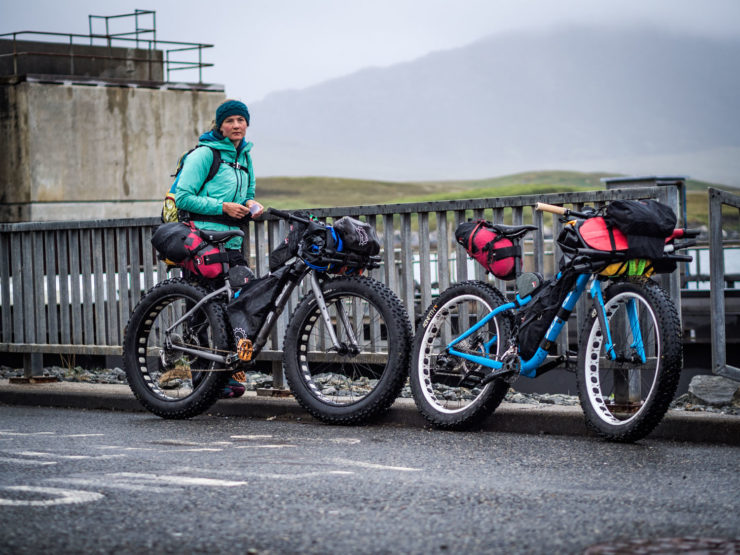
Clothing
Waterproofs: bring them! Proper ones. As with any multi-day trip to damper regions, a decent waterproof jacket is a must. Your ultra-lightweight jacket with no hood won’t be a nice place to be if the rain sets in for two or three days. Waterproof legwear is also a very good idea—shorts as a minimum, but we generally always have lightweight waterproof trousers in our packs. I have seen a waterproof kilt before, but have never tried one, so further research is needed. Waterproof socks (such as Sealskinz) are also very popular, as when water comes over the top of them it stays warm against your feet, like a wetsuit. If it sounds like a drysuit is going to be your next purchase then don’t worry, it’s rare to get a week of uniformly horrible weather, but in Scotland it generally pays to pack for the worst and hope for the best.

Shelter
If you’re visiting in summer, make sure that your shelter is midge-proof. If you haven’t yet been introduced, midges are tiny biting flies—picture a miniaturised mosquito—that appear from early May at the earliest, and can linger through to October on occasion. Individually, midges aren’t a menace, but where one pops up two million more will follow. They love calm, overcast, and humid weather, but are driven away by winds over 12km/h or so. A shelter with a bug net is highly recommended, and I’ve never understood why I still see so many people bivvying in summer, usually looking a bit demented and covered in small red bites. Considering the amount of water that’s typically around, a bathtub-style floor is also recommended. You might choose a hooped-bivvy or one of any number of tent styles to meet these two criteria, but you’ll be glad for both, whatever you go for. Tarps and bivvies are a recipe for a sad night in my opinion, but I’m sure you will find plenty of people to disagree!
Bothies often come up in conversation. To the uninitiated, these are various structures dotted around the Highlands—some used to be gamekeeper’s cottages, others are ex-schoolhouses or even an old submarine lookout post—that provide basic shelter and are open and free to use. Most, but not all, are managed by the Mountain Bothies Association, who promote a simple code of conduct to make their use sustainable and fair. In most cases, you get four walls and a roof, but some have a fireplace, sleeping platforms, tables and chairs. The toilet is usually a spade leaning in the porch. One even has electricity. Depending on your point of view, you might see them as a bit damp and grungy, or a welcome oasis. Either way, remember not to rely on their use: always have a tent or other shelter with you in case the bothy is full, and respect the bothy code!
Cooking
Canister gas with a threaded fitting is easy to come by in the UK, and gas stoves generally perform best. Temperatures are very rarely cold enough to make a liquid-fuel stove worth the weight, although you might prefer the simmer control for cooking up a gourmet feast. Fuel for alcohol stoves is also easy to come by in outdoor shops if that’s your thing, although I’ve never really gotten on with alcohol stoves in windy, often lumpy tent porches.
Water in the Highlands is often safe to drink if there are no buildings or grazing animals upstream. This can never be guaranteed though, so a lightweight filter is worth carrying. Give extra thought to water sources on routes like the Capital Trail that pass through a lot of upland grazing areas. It’s rare to go far without access to water, and I can’t remember ever carrying more than 1.5 litres of water while riding in Scotland.
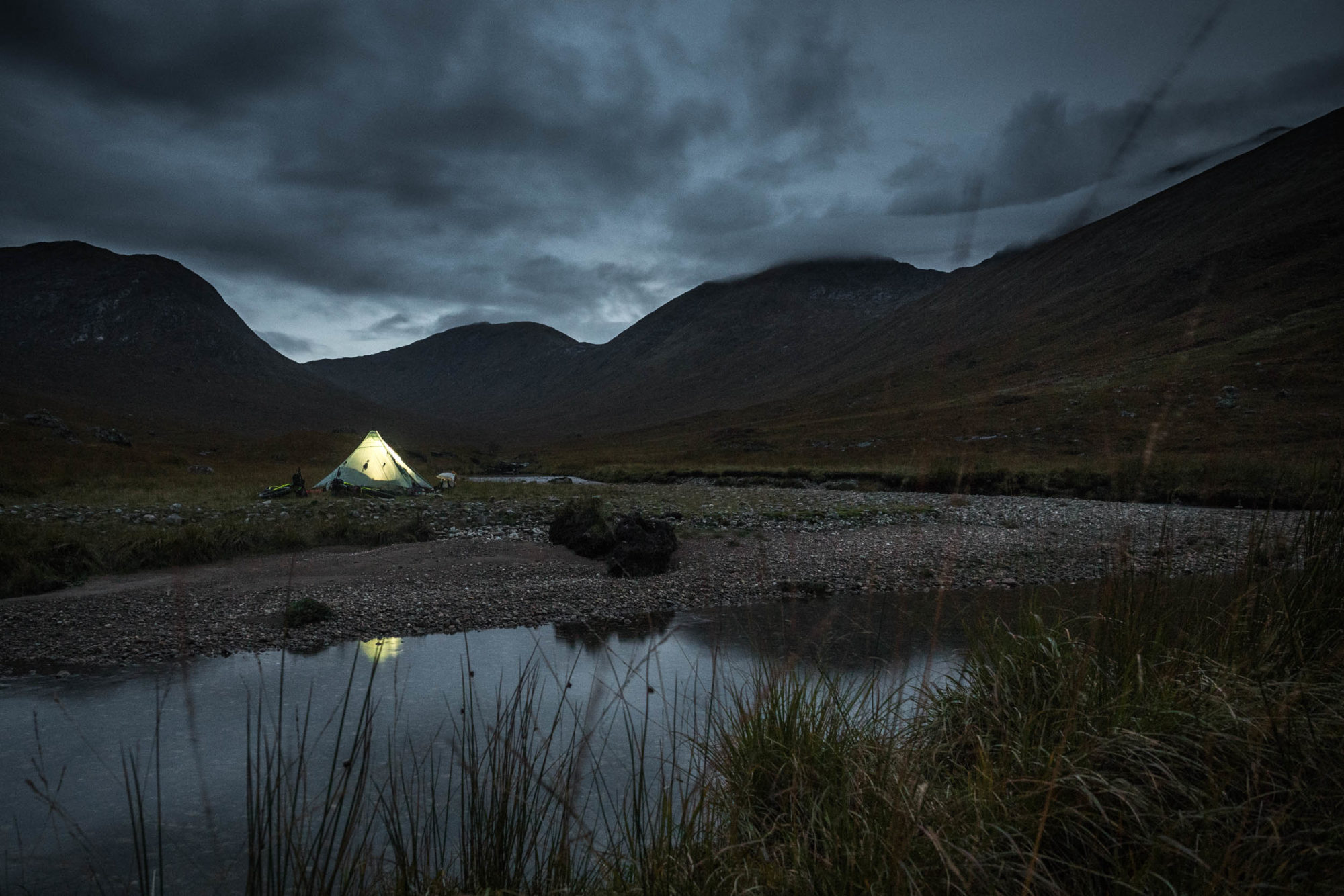
Weather, Planning, and Safety
Weather
Being a North Atlantic country, Scotland’s climate is wet, windy, and unpredictable. Rainfall in the west exceeds 3,000mm (120 inches) in places. One area that I work in regularly has been known to experience 30 rainy days out of 31 in a single month, while in the east it can be as low as 670mm (26 inches), and often dry. The temperate Atlantic climate is mild, especially in the west, thanks to the warming effect of the Gulf Stream. Winter low temperatures will generally hover around or above zero (32°F), while summer highs are generally in the high teens (60-67°F).
Outside these rules of thumb, expect the unexpected! May and September often enjoy spells of settled weather, while August is warm but often experiences wetter weather. Good and bad weather can be had at any time of year, often occurring in the same day or even the same hour. However, that changeability can work in your favour, and the rain rarely lasts too long. It’s often said that the best thing to do with a bad forecast is to wait until it changes for the better!
On that note, weather forecasts are a hotly debated topic, with different people swearing by different ones. It’s often useful to take an average of a few key forecasts. The following are widely used:
The Mountain Weather Information Service is an invaluable resource for weather forecasts that are specific to Scotland’s mountain regions, and though the language used can take a little getting used to, it should be a go-to for weather in the highlands as it’s tailored to those looking to make plans in the outdoors.
The Met Office also provides forecasts for certain mountain summits, e.g. Cairn Gorm in the east, that paint a good picture of what’s going on in higher terrain.
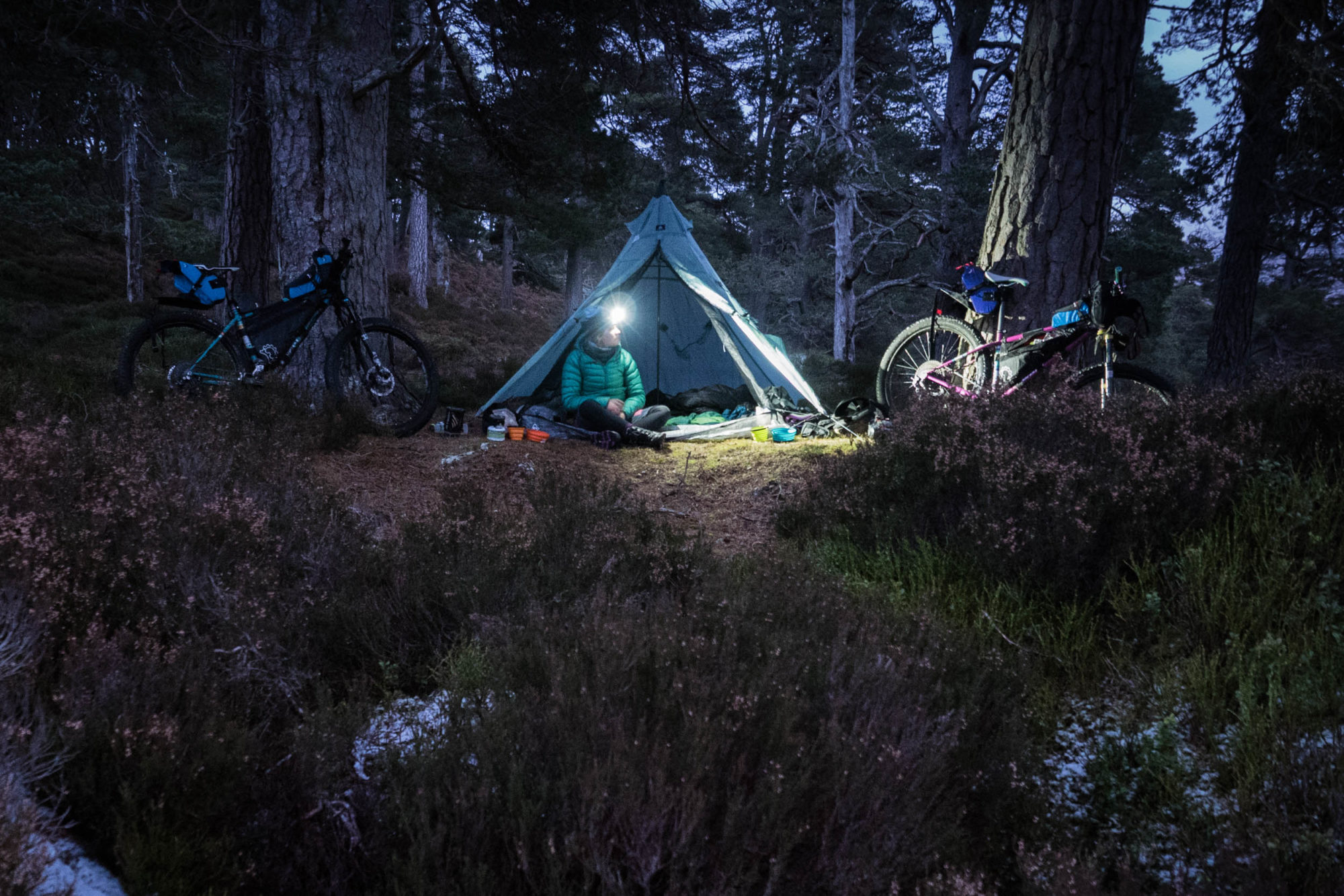
In an Emergency
Scotland is lucky to be served by a mountain rescue service that is available 24/7, 365 days a year. The various teams are staffed by dedicated, highly trained volunteers, and there is no cost to the end user. Unlike some rescue services in other parts of the world there is no requirement to register or take out membership. However, you should always take out travel insurance relevant to your trip before travelling. The fact that the teams are volunteers, who undertake personal risk in order to mount searches in Scotland’s notoriously fickle weather, places a responsibility on outdoor users to be prepared. Don’t be fooled by Scotland’s relatively low altitude: even in summer, conditions can be extremely cold, wet and windy, and rugged trails can make escape (and assistance) difficult and slow. Do not expect rescue to be immediate and do not expect a helicopter. Know where you are, know where you’re going, and tell someone of your plans.
- Mountain Rescue is coordinated by the police service, so in the event of an emergency you should call 999 and ask for the police. When you’ve been put through to the police, you can then explain your situation and ask for Mountain Rescue.
- Phone signal in the mountains is improving, but will always be subject to huge areas without coverage. It is possible to text a message to the 999 number, but this requires registering your phone first, which is highly recommended.
- Even in serious incidents, it’s not unusual for bad weather to prevent helicopter support, and in remote areas of the Highlands an emergency response can take several hours to reach a casualty. You should always pack spare calories, spare layers, and some form of shelter to allow you to remain stationary for some time before rescue or self-extraction.
Beasties
Midges aren’t the only beasties that want a piece of you. Ticks are present throughout Scotland, and Lyme disease is increasingly prevalent, as well as several other tick-borne diseases. Ticks can be found from February right through to November. Good practise is to check yourself for ticks at least once a day: they particularly like warm, damp areas like the backs of your knees, inner thighs, and under the hem of your socks. Leg coverings are a good idea if you’re moving through tall vegetation, as is tucking your trousers into your socks.
Tick bites are painless, but relatively easy to spot if you’re looking, as the surrounding area will be inflamed. Care should be taken when removing ticks to minimise the risk of disease transmission: the received wisdom of burning, ‘unscrewing’ or suffocating them encourages regurgitation, which increases the chances of infection, and should be avoided. Tick twisters and tick cards are small tools designed to remove them safely and can be found in any good outdoor shop. They are a recommended piece of equipment!
The NHS website provides information on the symptoms of Lyme disease and steps to take if you suspect infection.
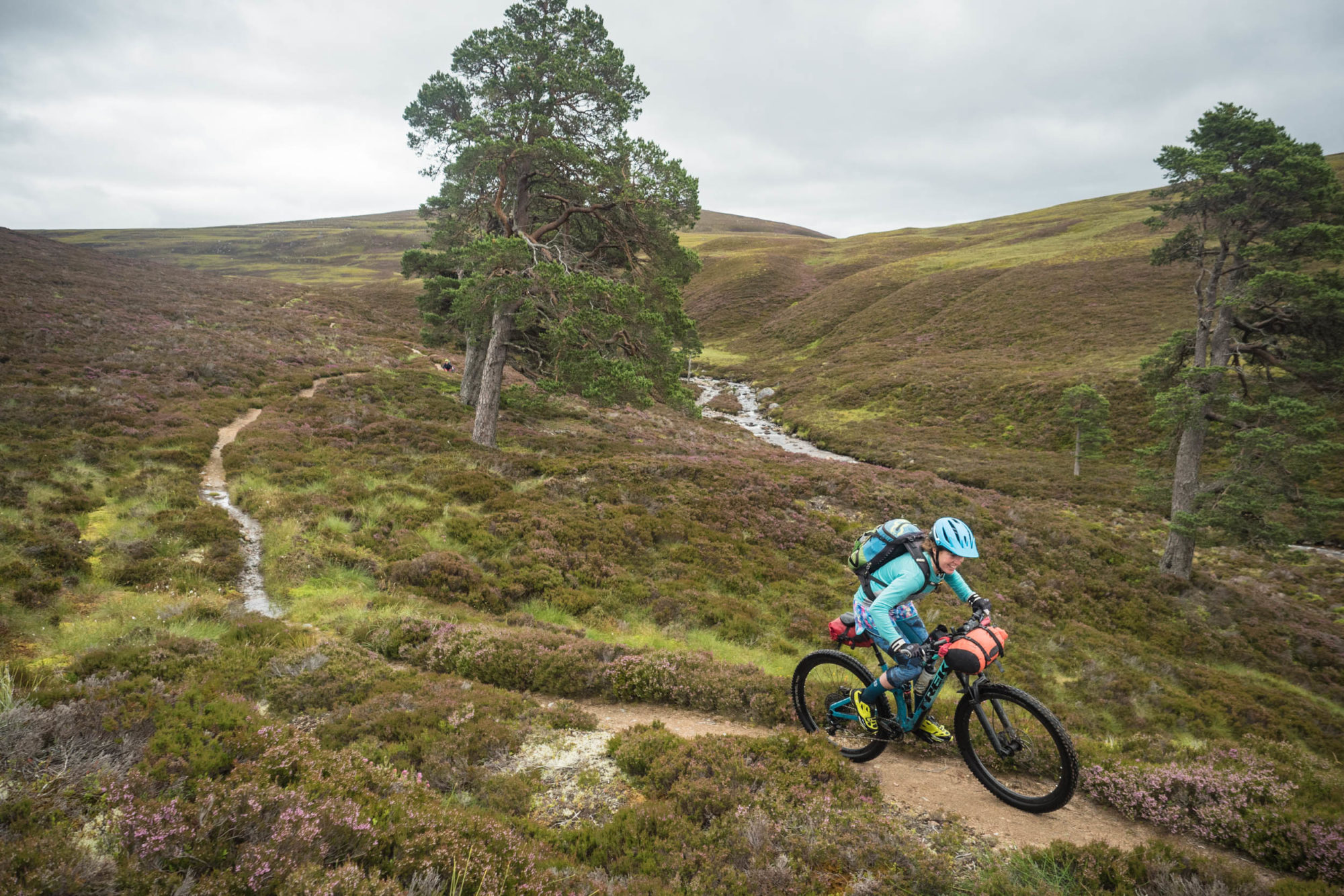
Inspiration
Much has been written about Scotland here on BIKEPACKING.com, and the following are a handful of my favorite pieces from over the years. It’s my hope that these provide you with a bit of inspiration and encouragement to book a trip and see Scotland for yourself!
Drovers (Film)
Filmed on a 331-kilometer gravel bikepacking route in Scotland, Drovers tells the story of the ancient Scottish roads that are an integral part of the country’s history.
Rainspotting (Film)
Rainspotting is a short film from Pannier and Brother Cycles that follows a group of six bikepackers on a wintry three-day ramble through the gloomy Grampian Mountains of Scotland. Watch the full 17-minute film here
Ride of Passage
For a long time, setting off on a bikepacking trip felt unattainable for Lizz Corrigan. That is, until she decided she was done letting a lack of gear and experience hold her back and traveled to Scotland to ride a 220-mile route with her partner Ben. Ride of Passage is her reflection on her first trip to Scotland, along with some advice on how to get started.
Broken Road (Film)
Annie and I traveled by fatbike and packraft through Knoydart, one of the UK’s least accessible peninsulas, to link up old roads that have disintegrated with time. Along the way, Annie made this film.
Bikepacking the Cairngorms (Film)
Photographer and videographer Jeremy Janin surprised his father with a five-day self-supported bikepacking trip along The Cairngorms Loop in the Scottish Highlands. They had everything planned, but nothing went as planned.
Suilven Escape (Film)
Micro-adventurer Alastair Humphreys escapes downtown London via train on a folding-bike-rafting expedition to Suilven, a remote mountain in Scotland. Along the way he and Temujin Doran made this lovely film about the trip, the mountain, and the visual and written poetry that surrounds it.
The Highland Trail 550: The Fellowship (Film)
A beautifully shot video that follows rider Joachim Rosenlund during the 2017 Highland Trail 550 race, along with his story, “The Fellowship of the Highlands,”and a Q&A about the ride and Joachim’s kit list.
Please keep the conversation civil, constructive, and inclusive, or your comment will be removed.






